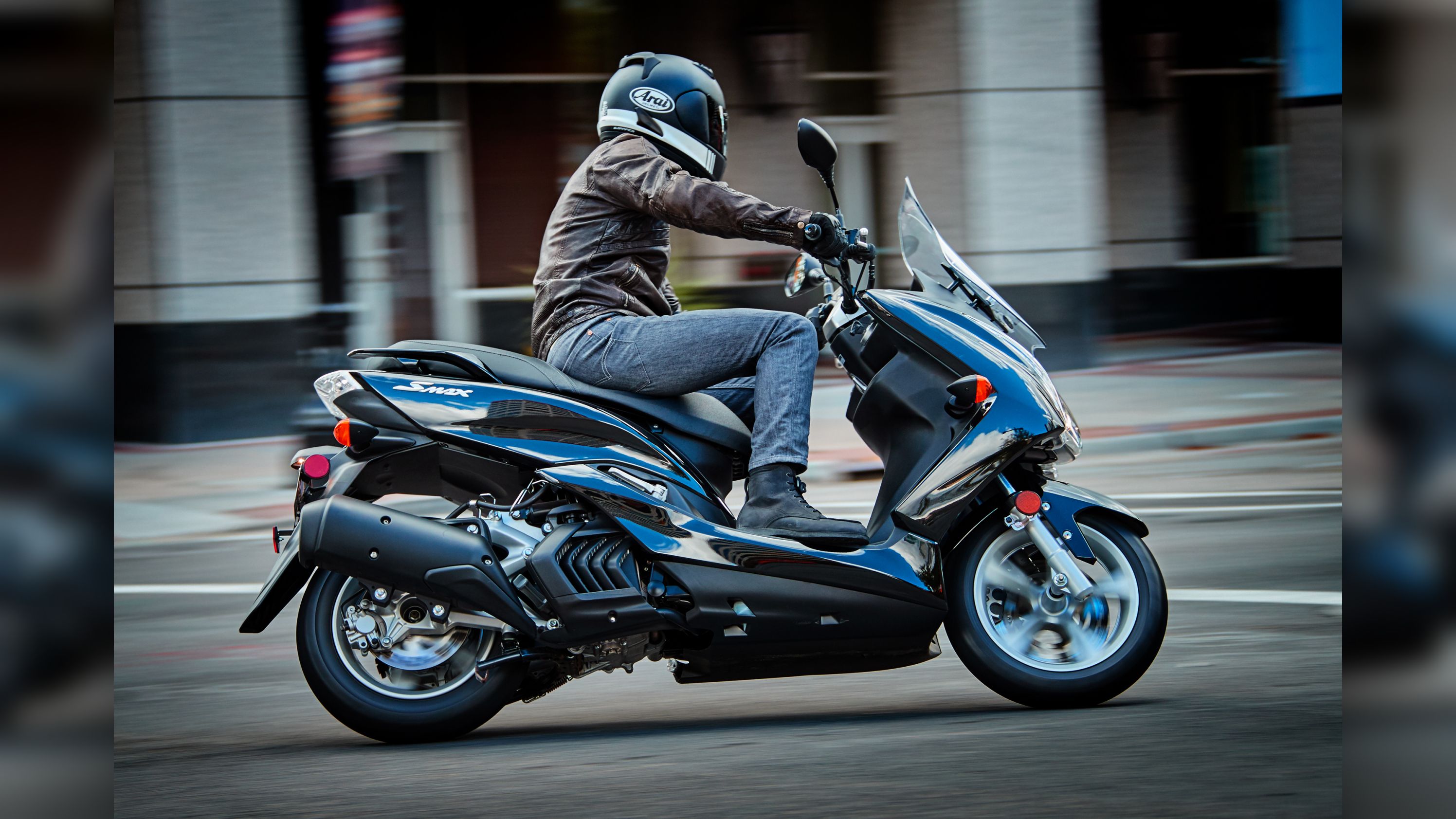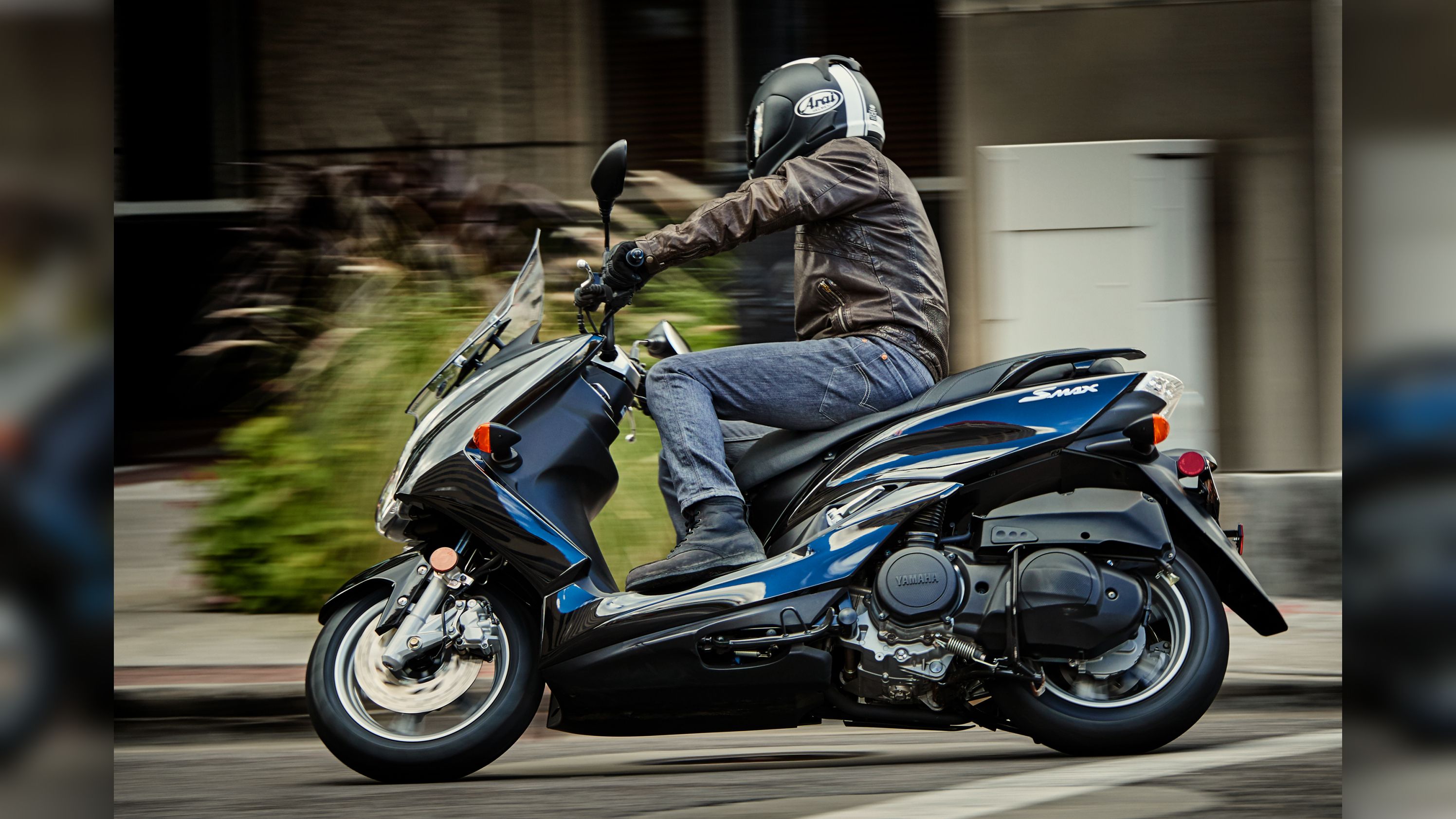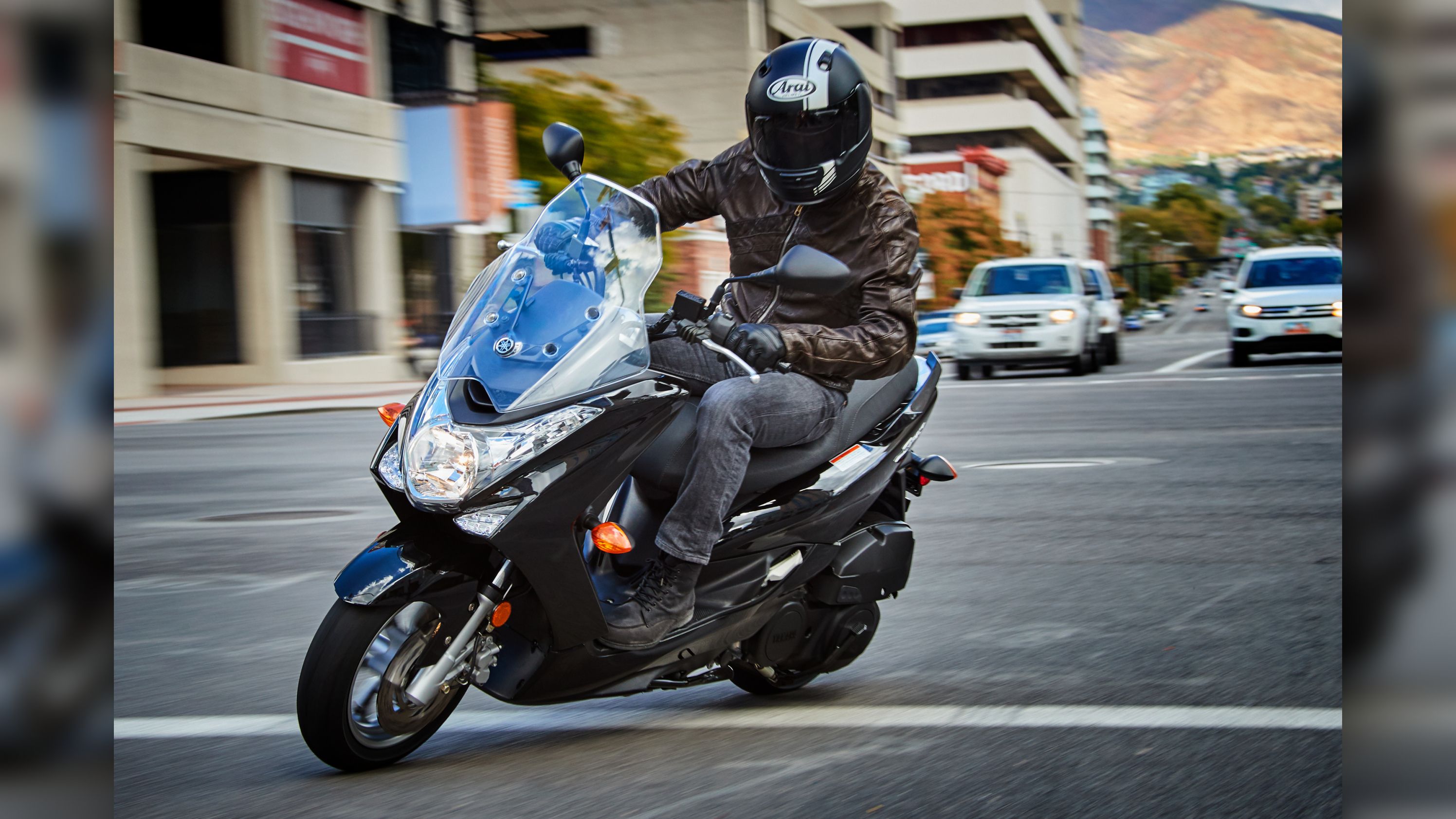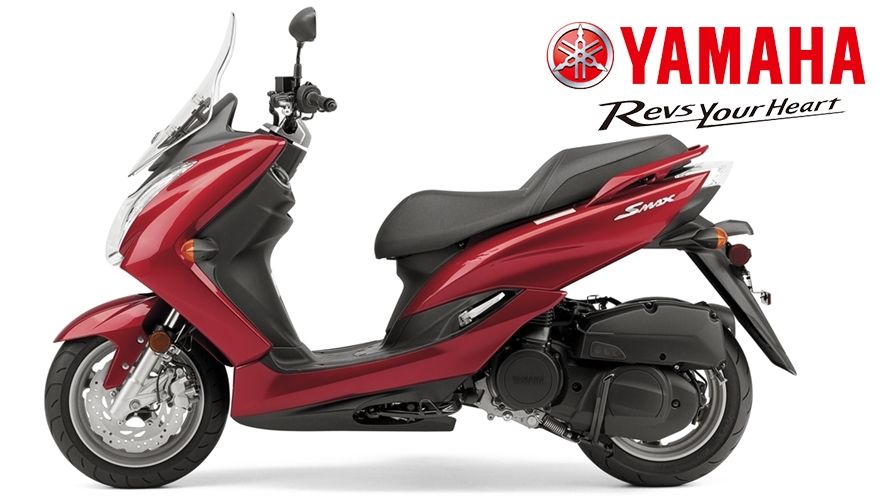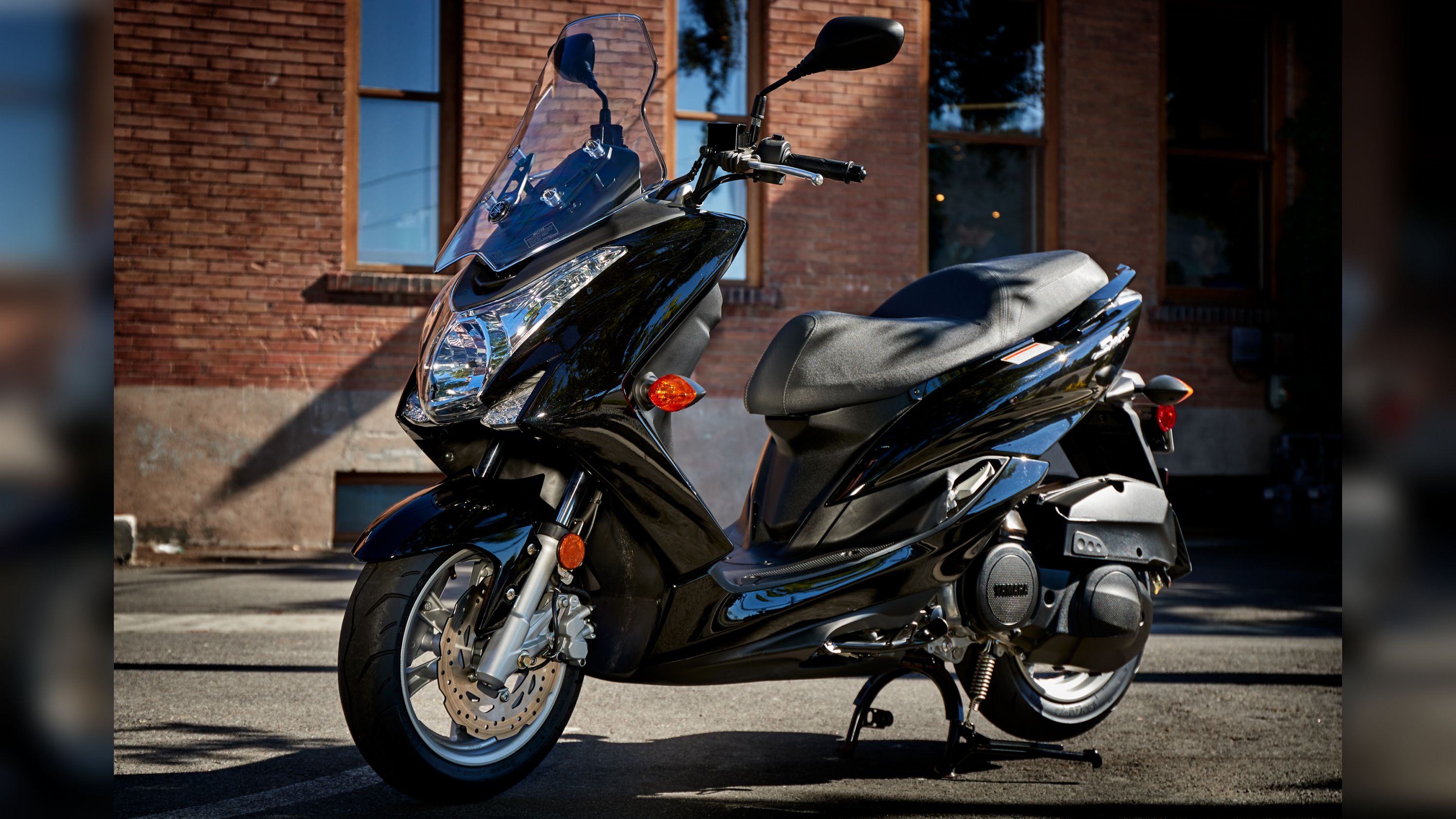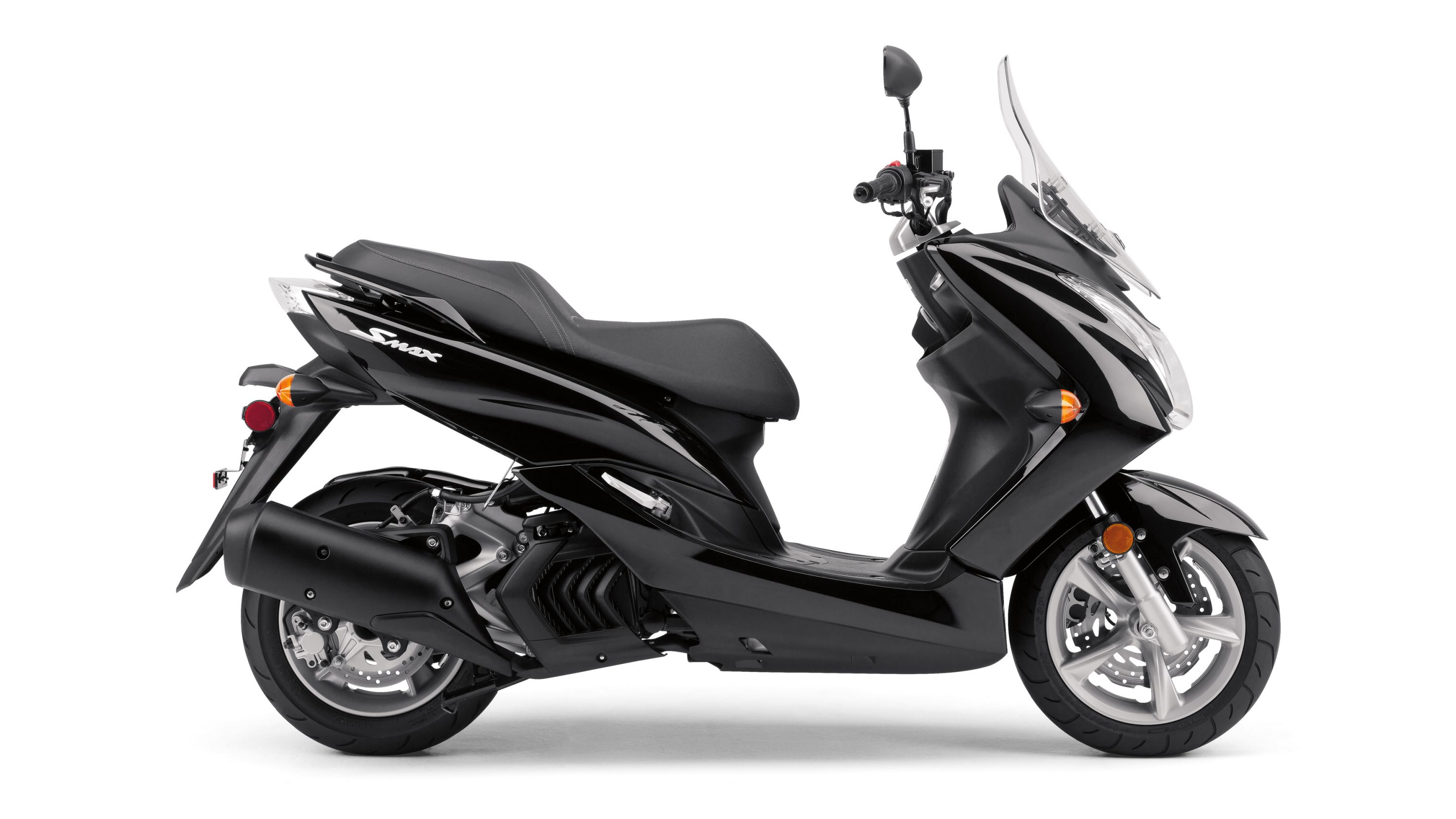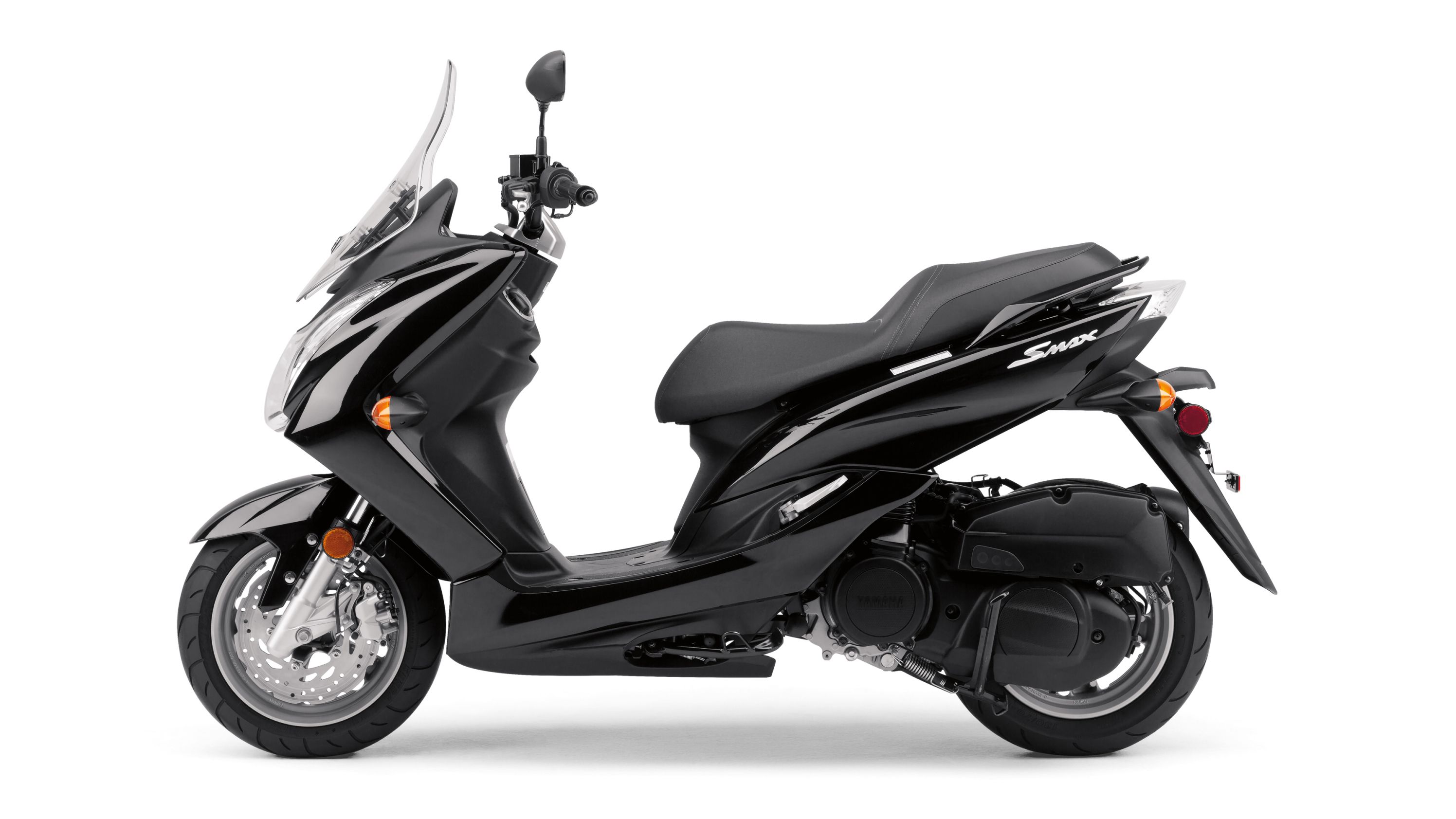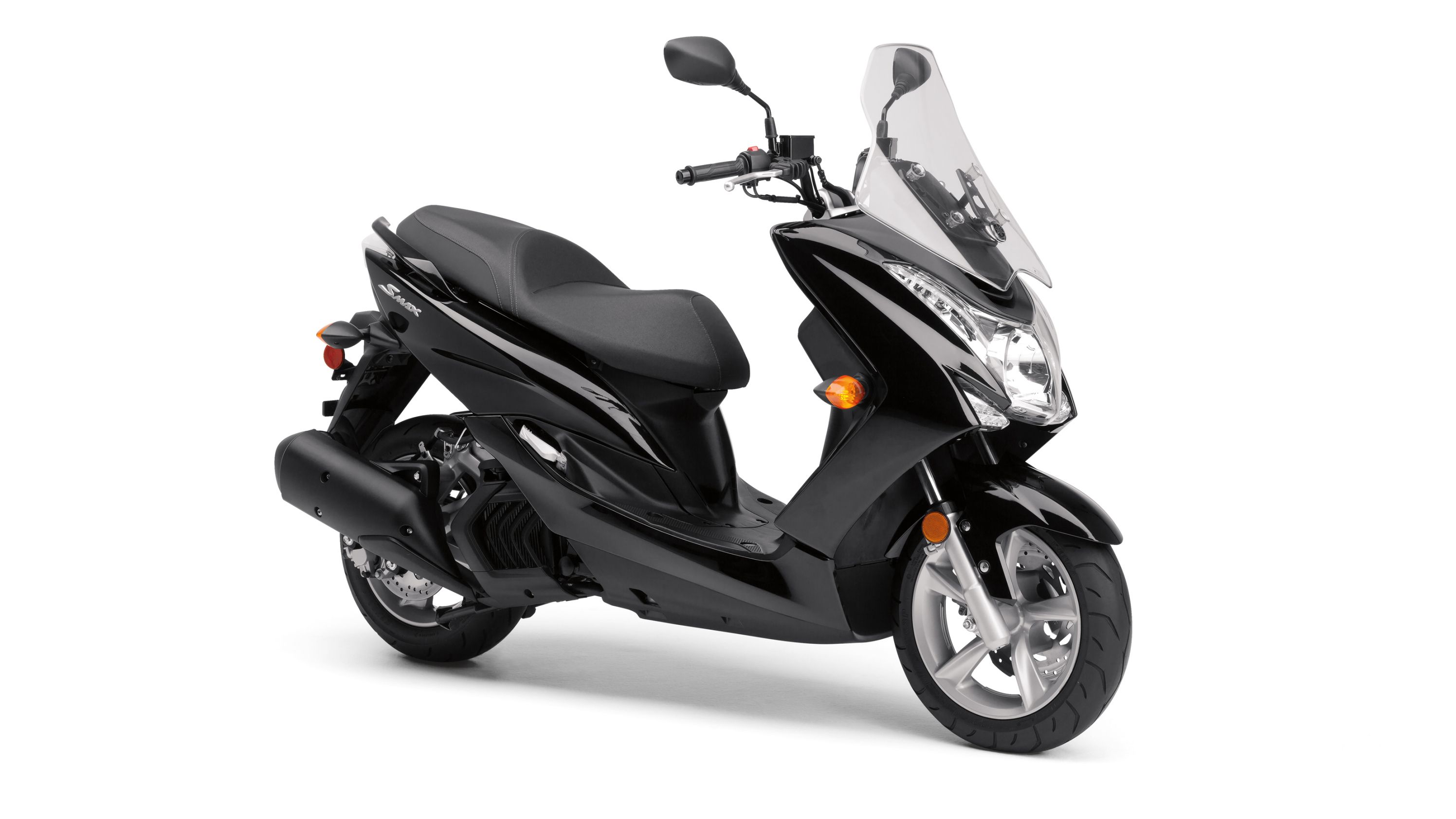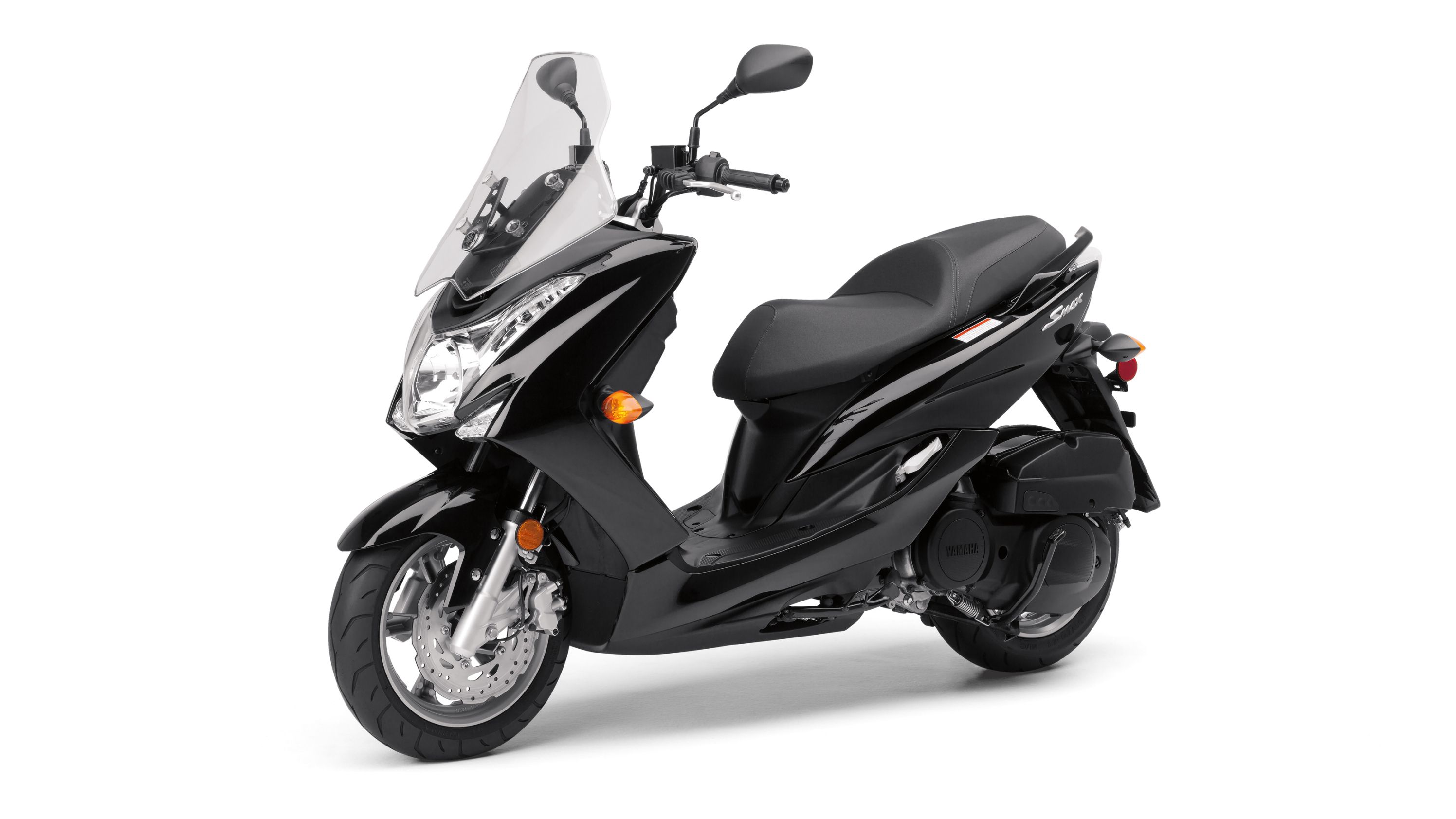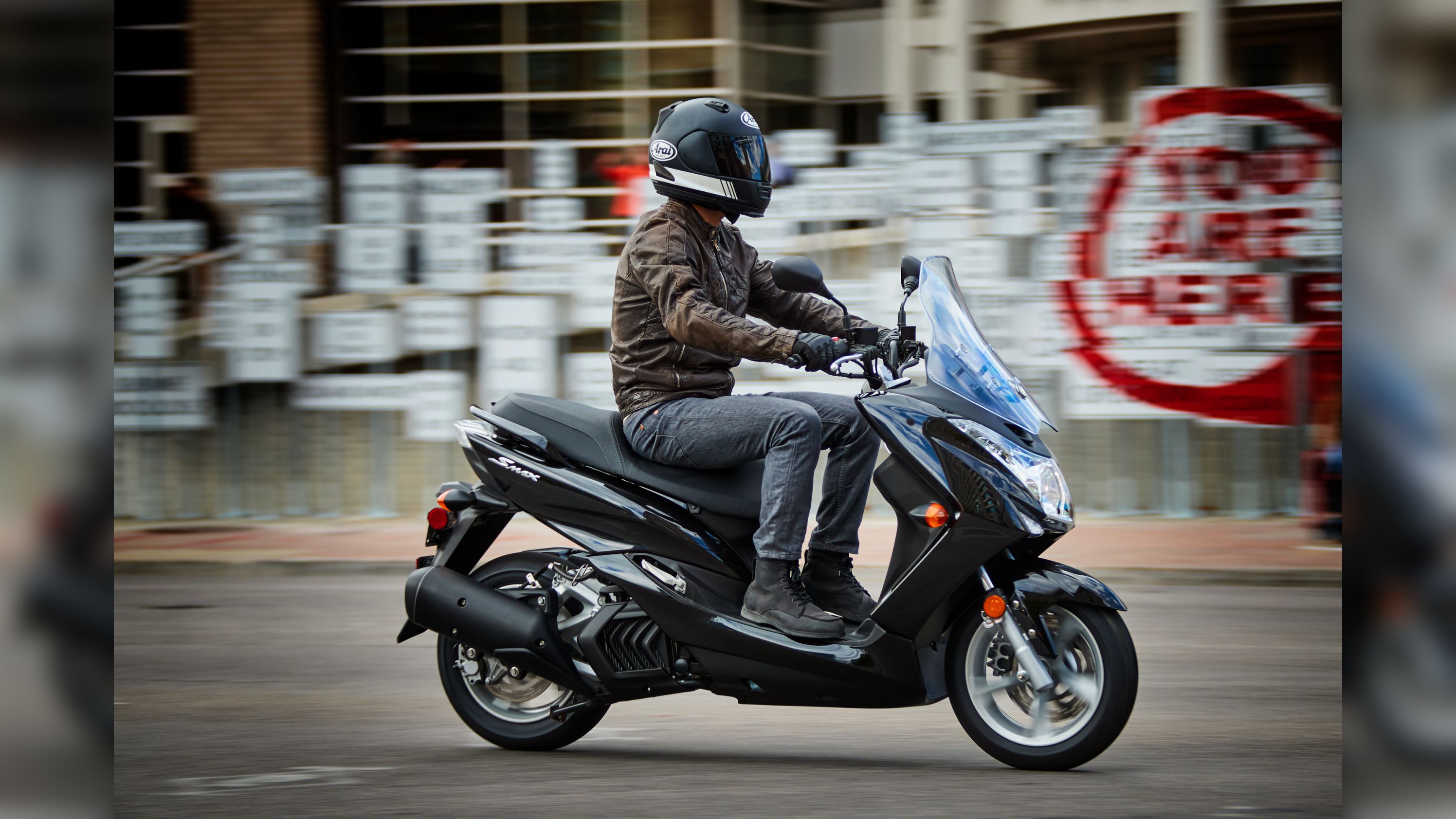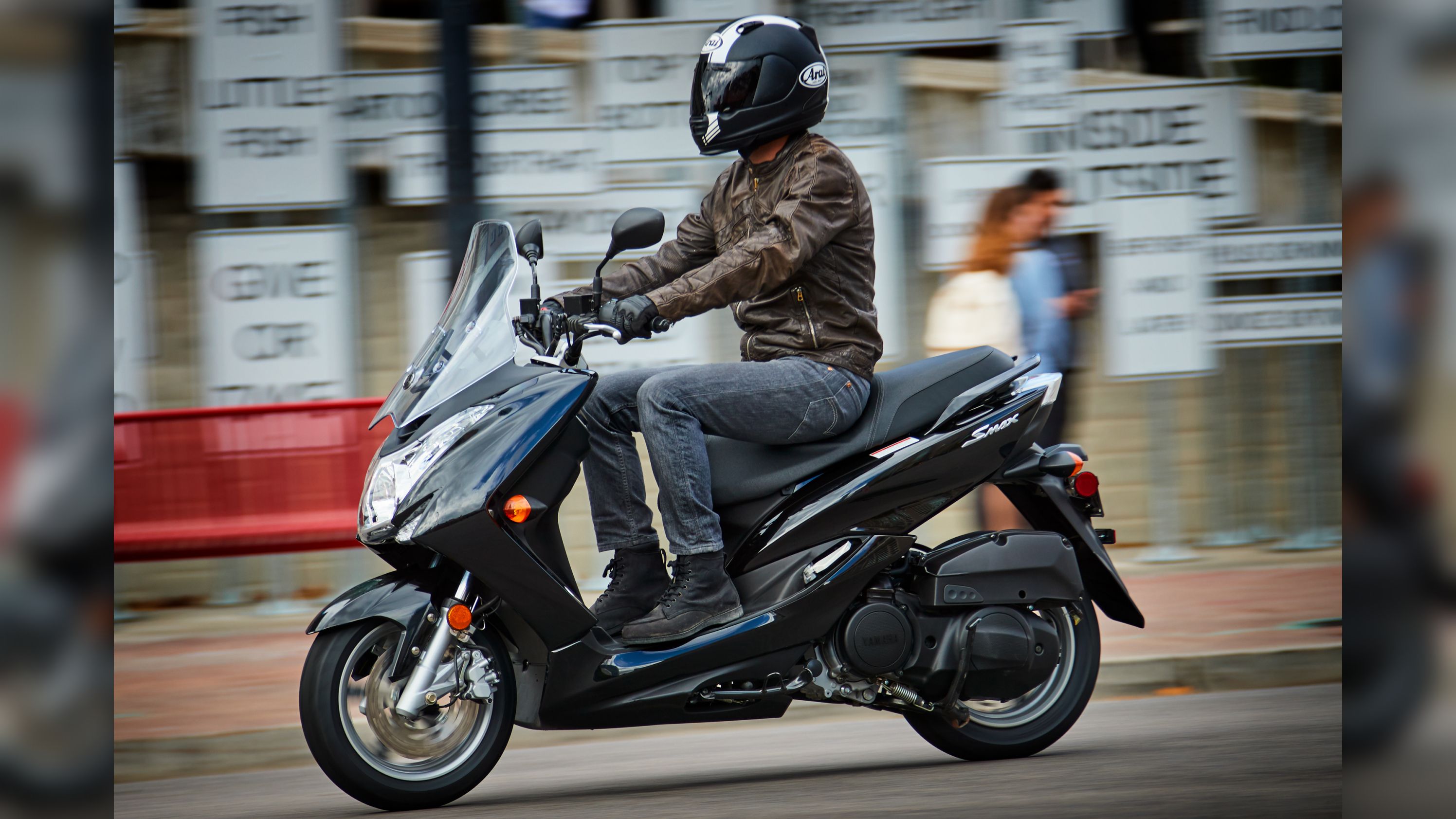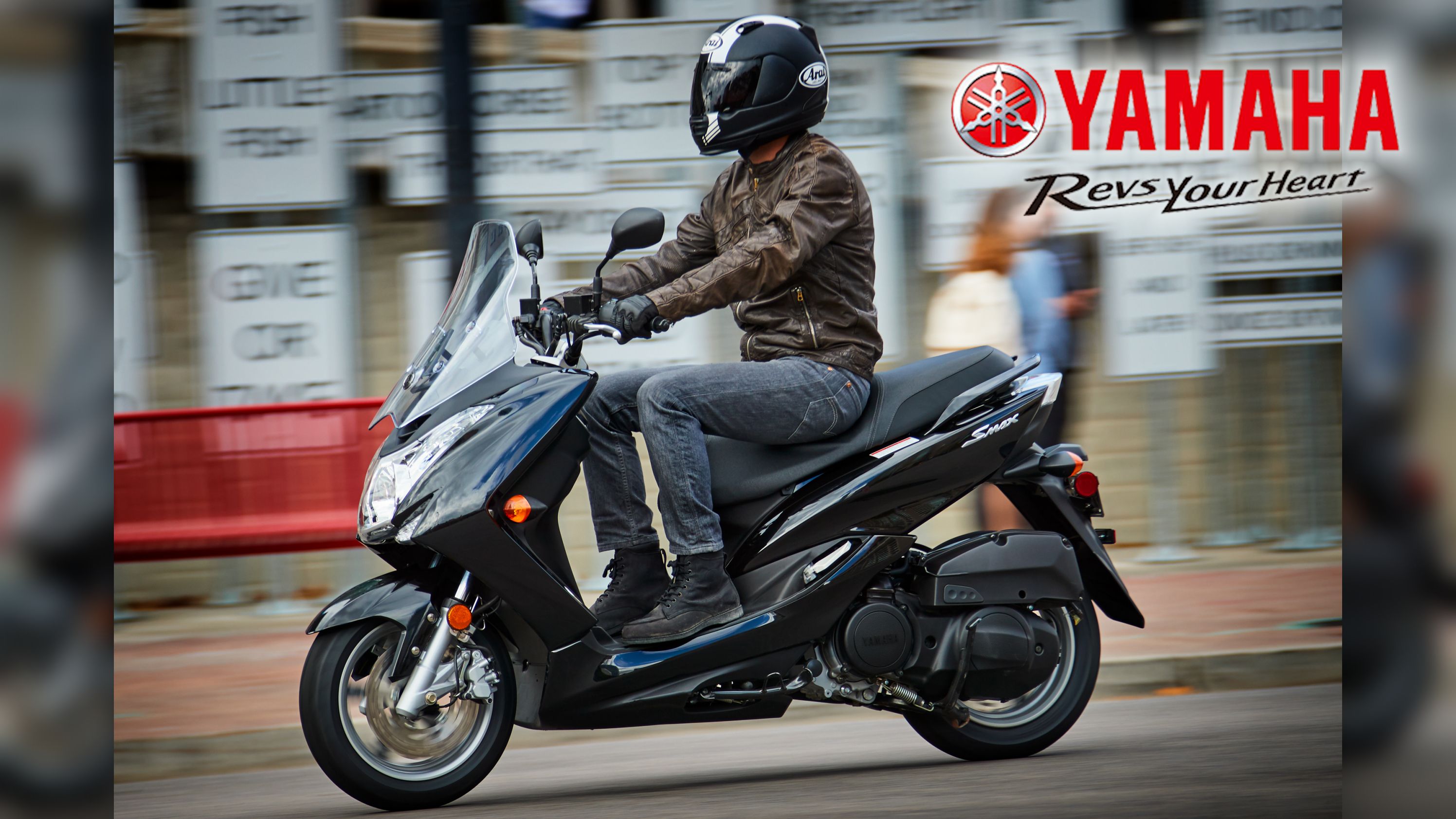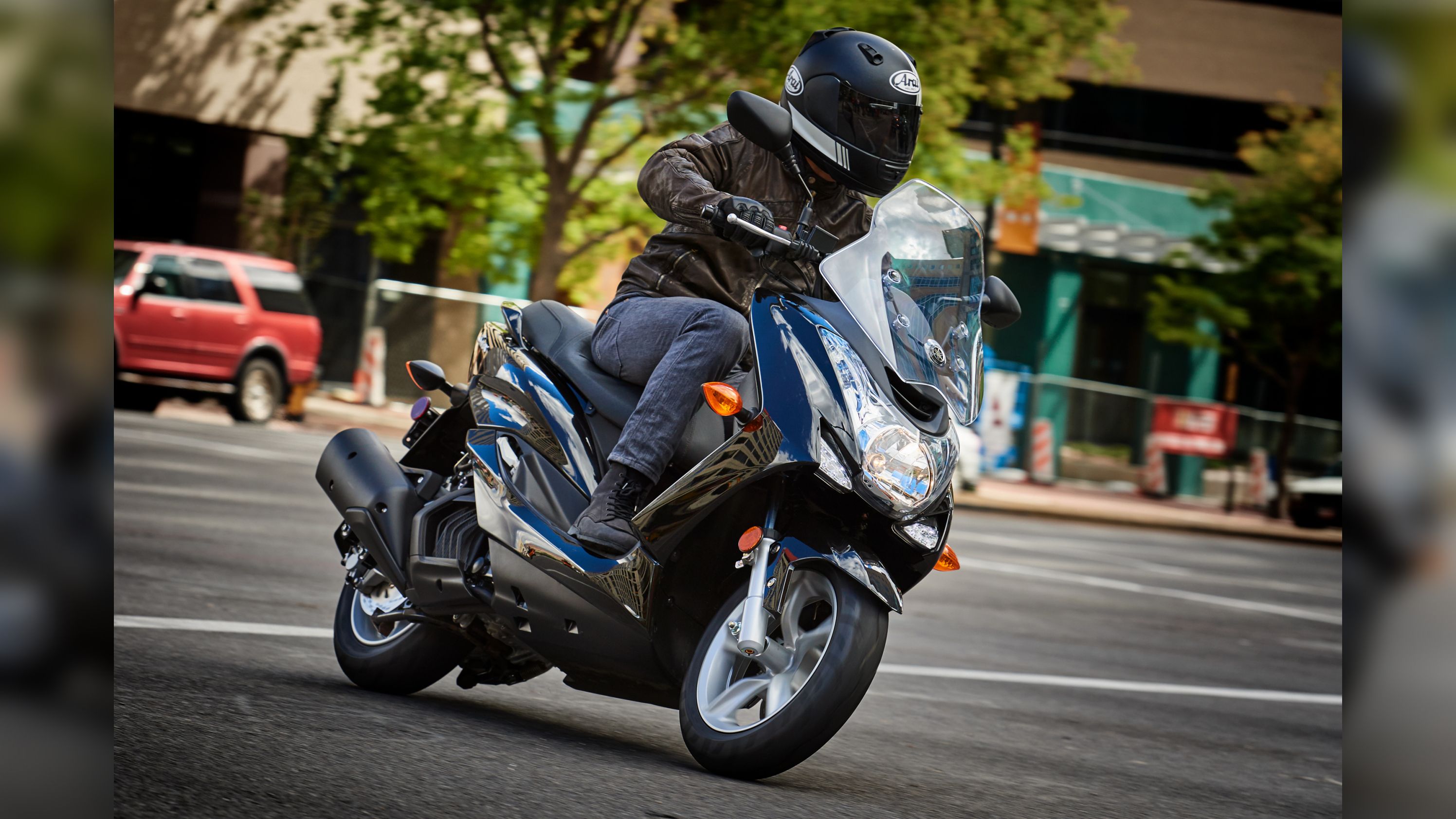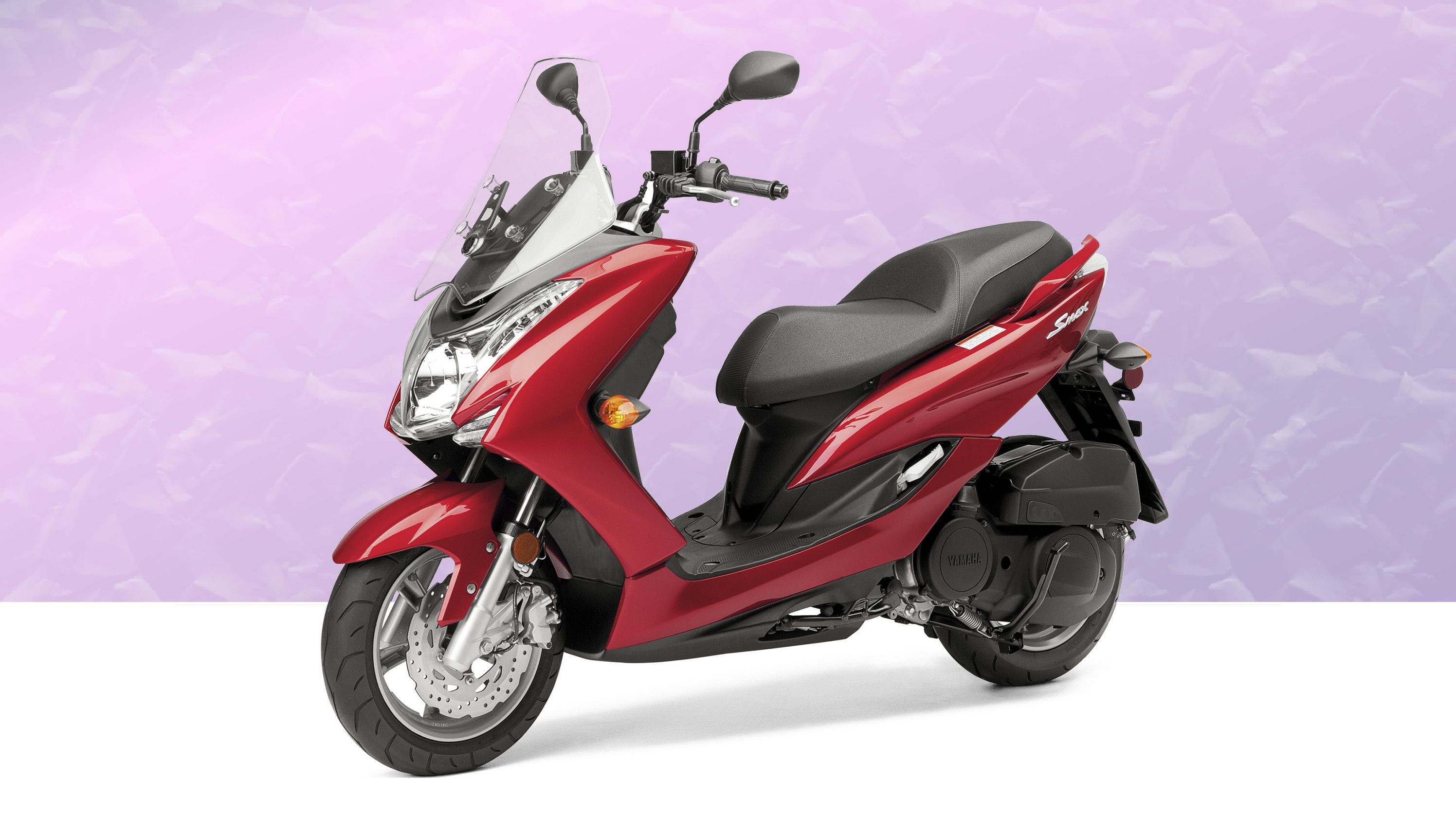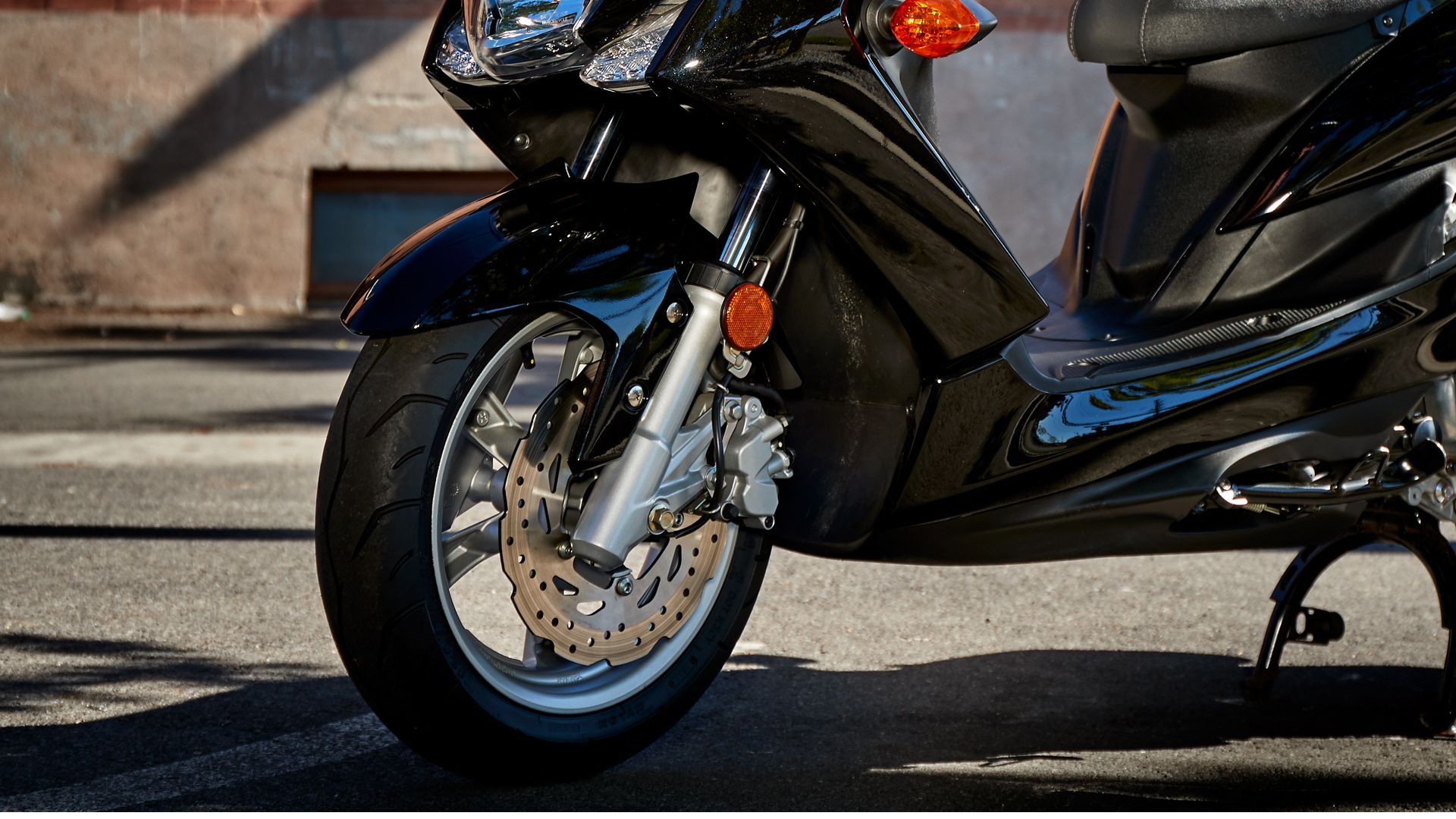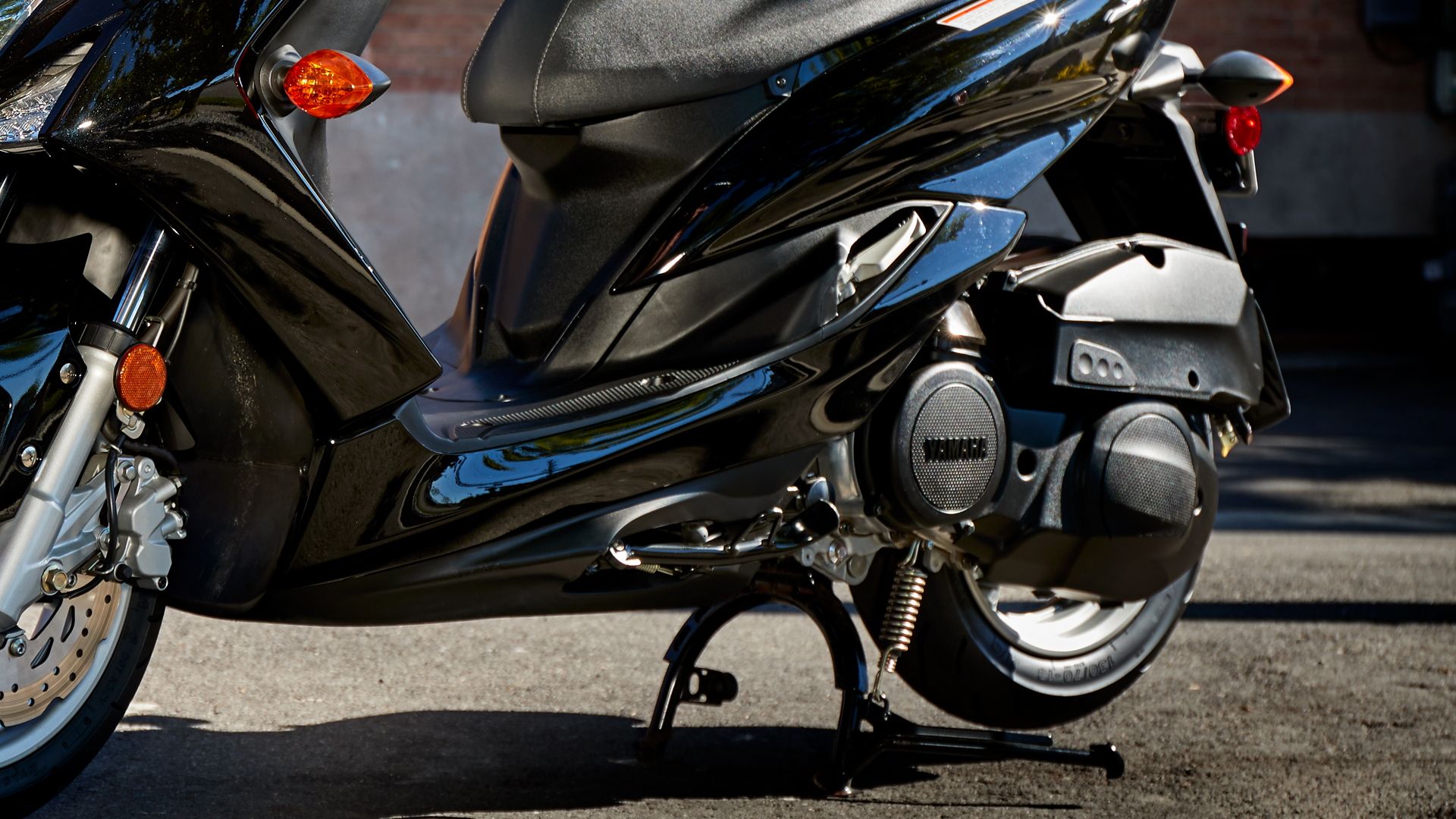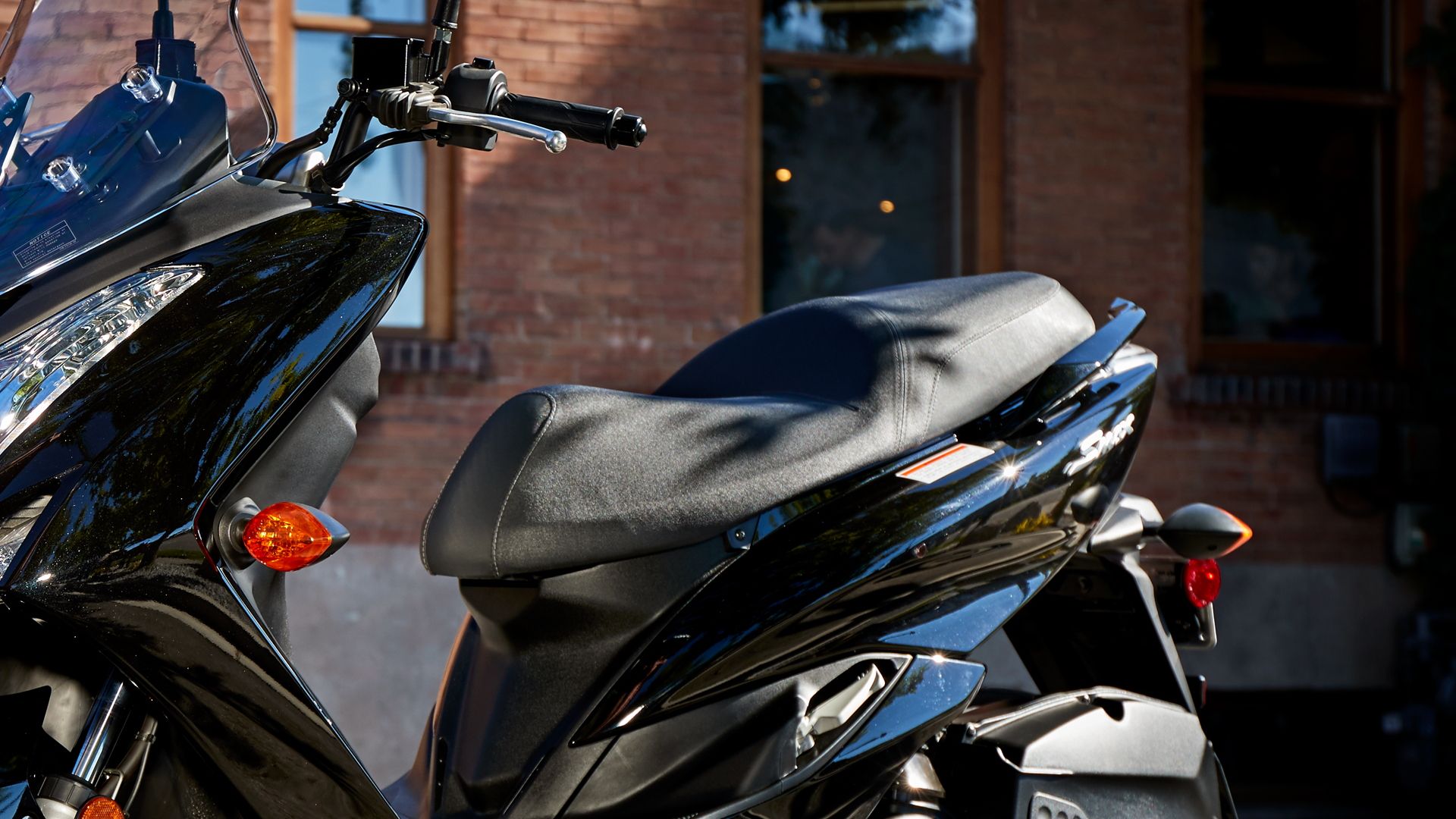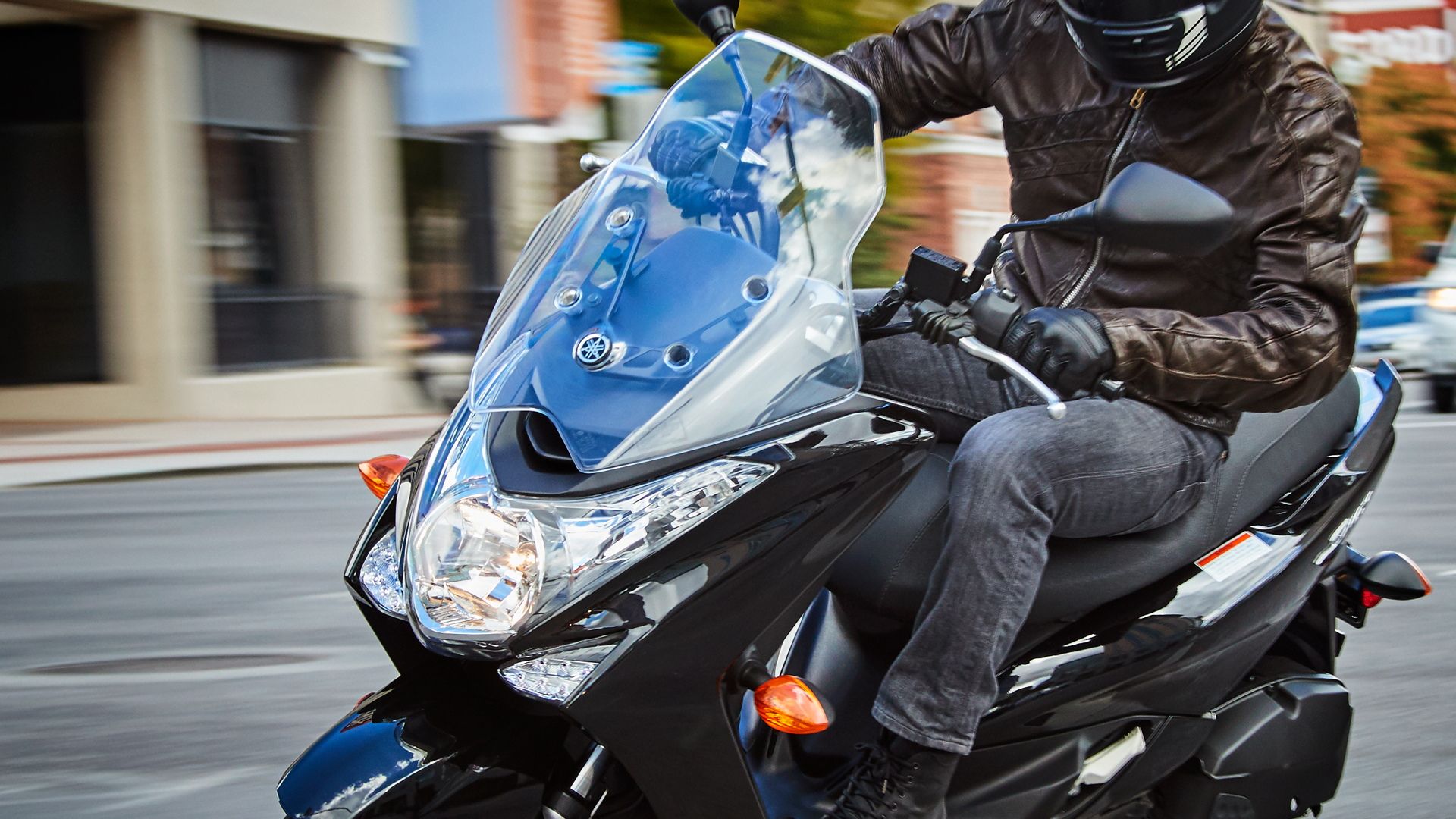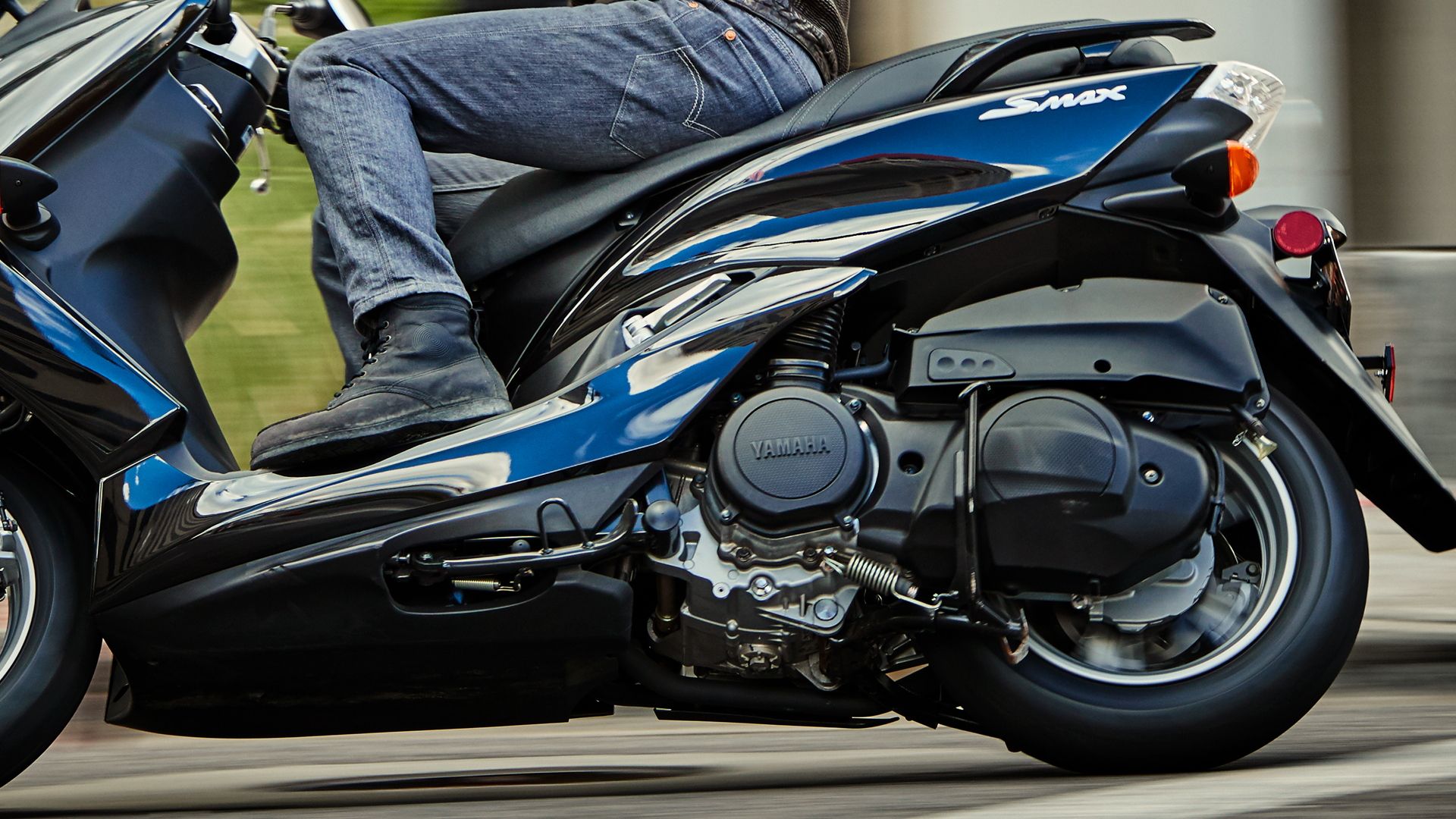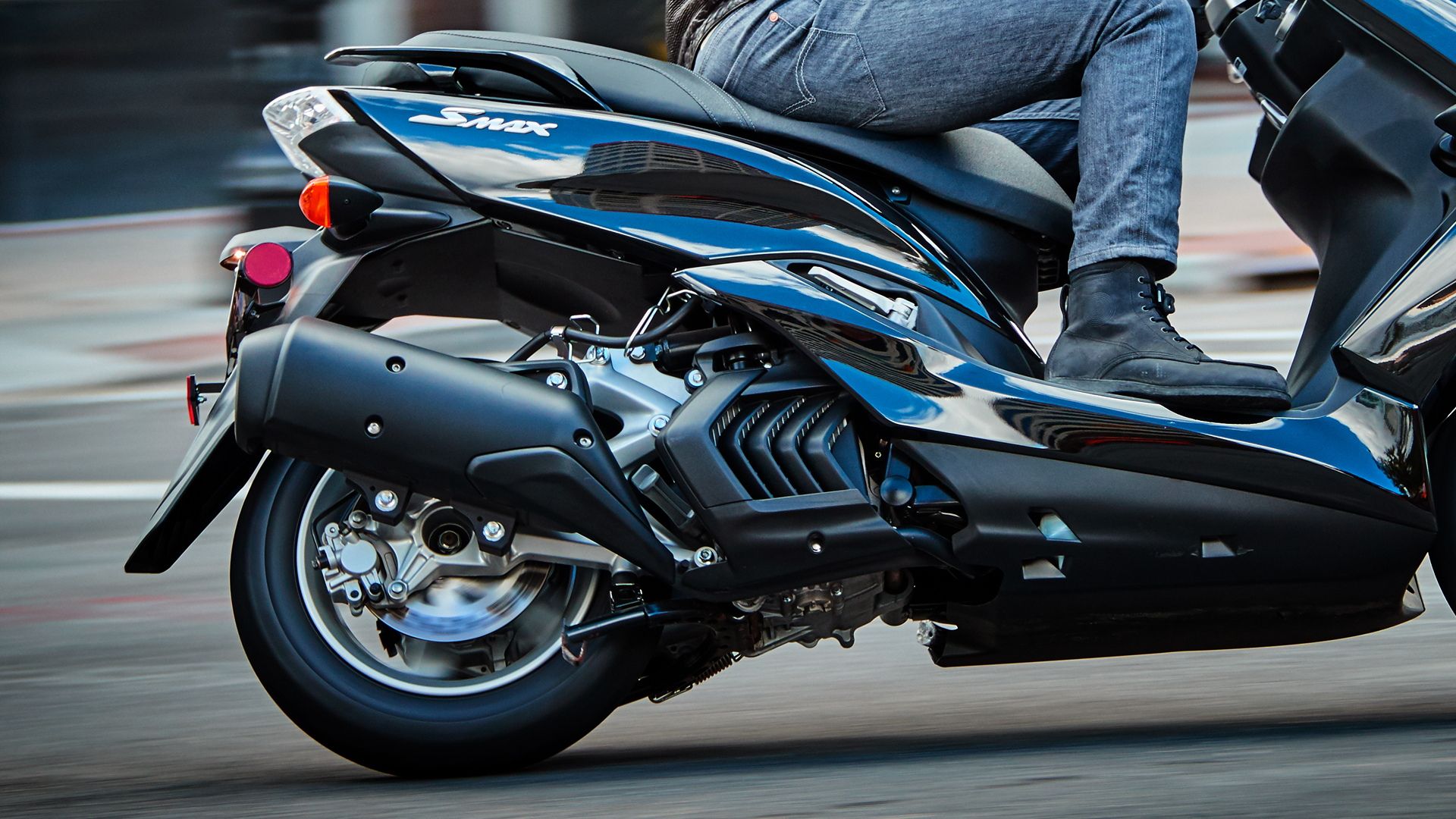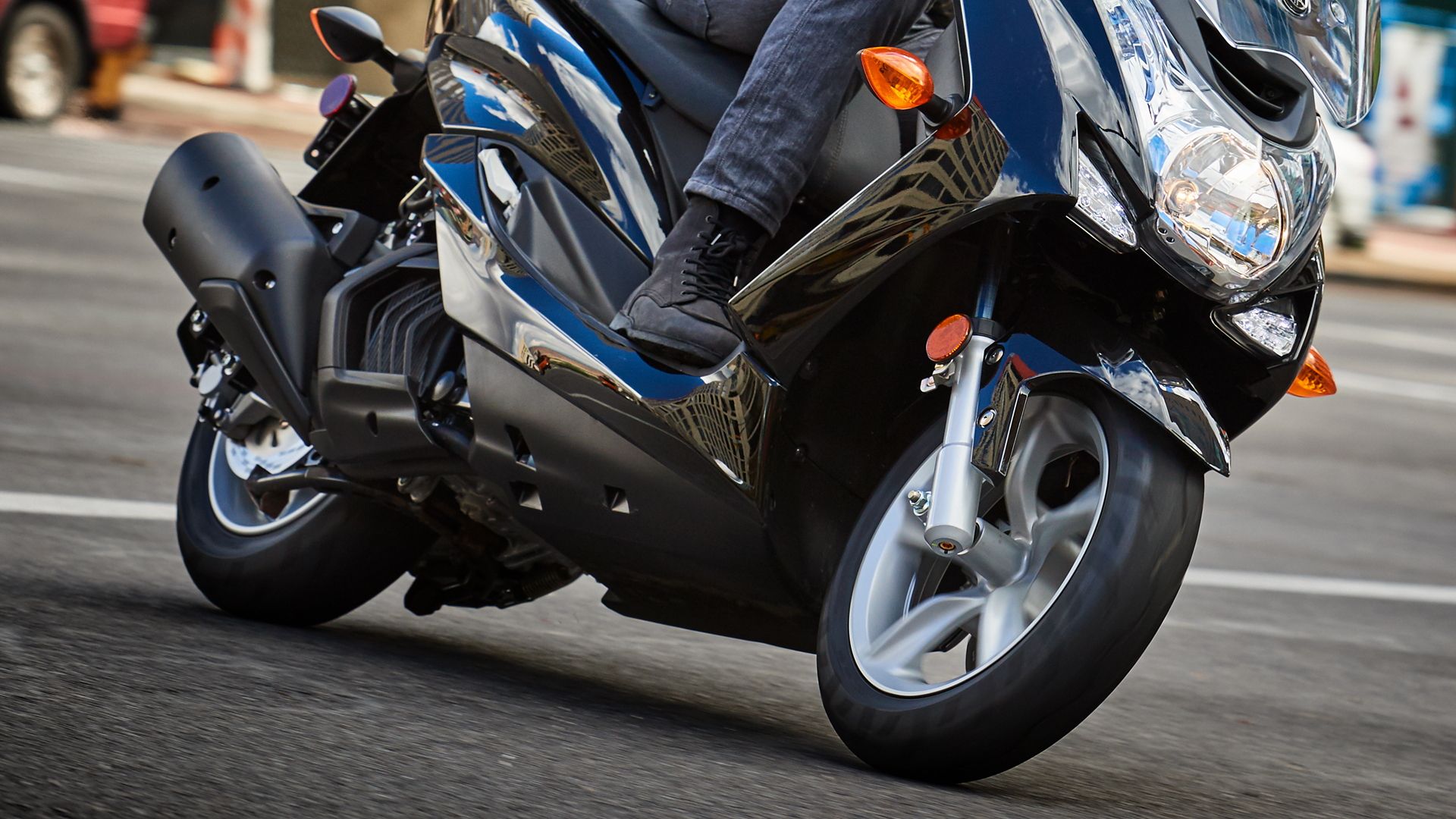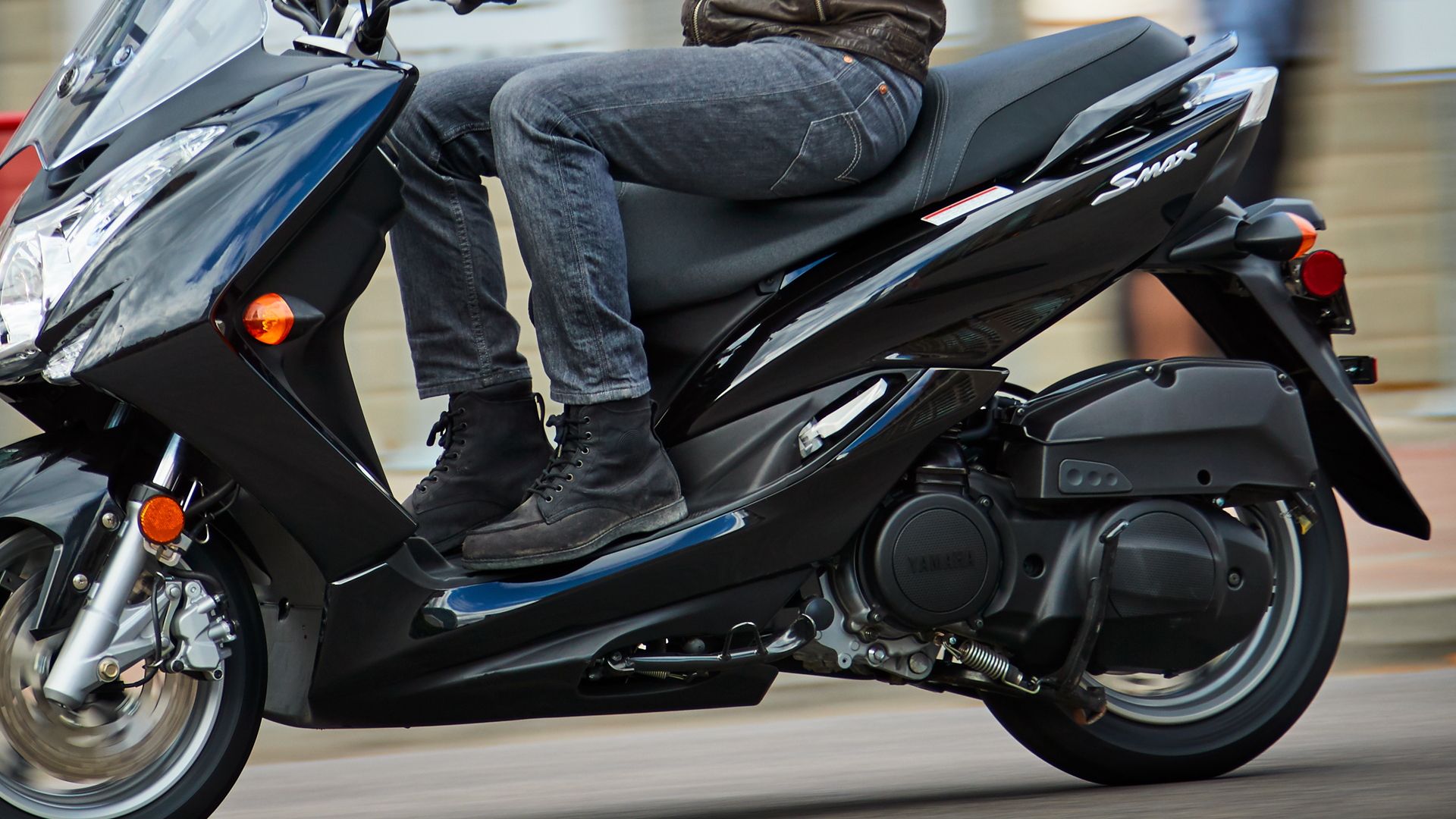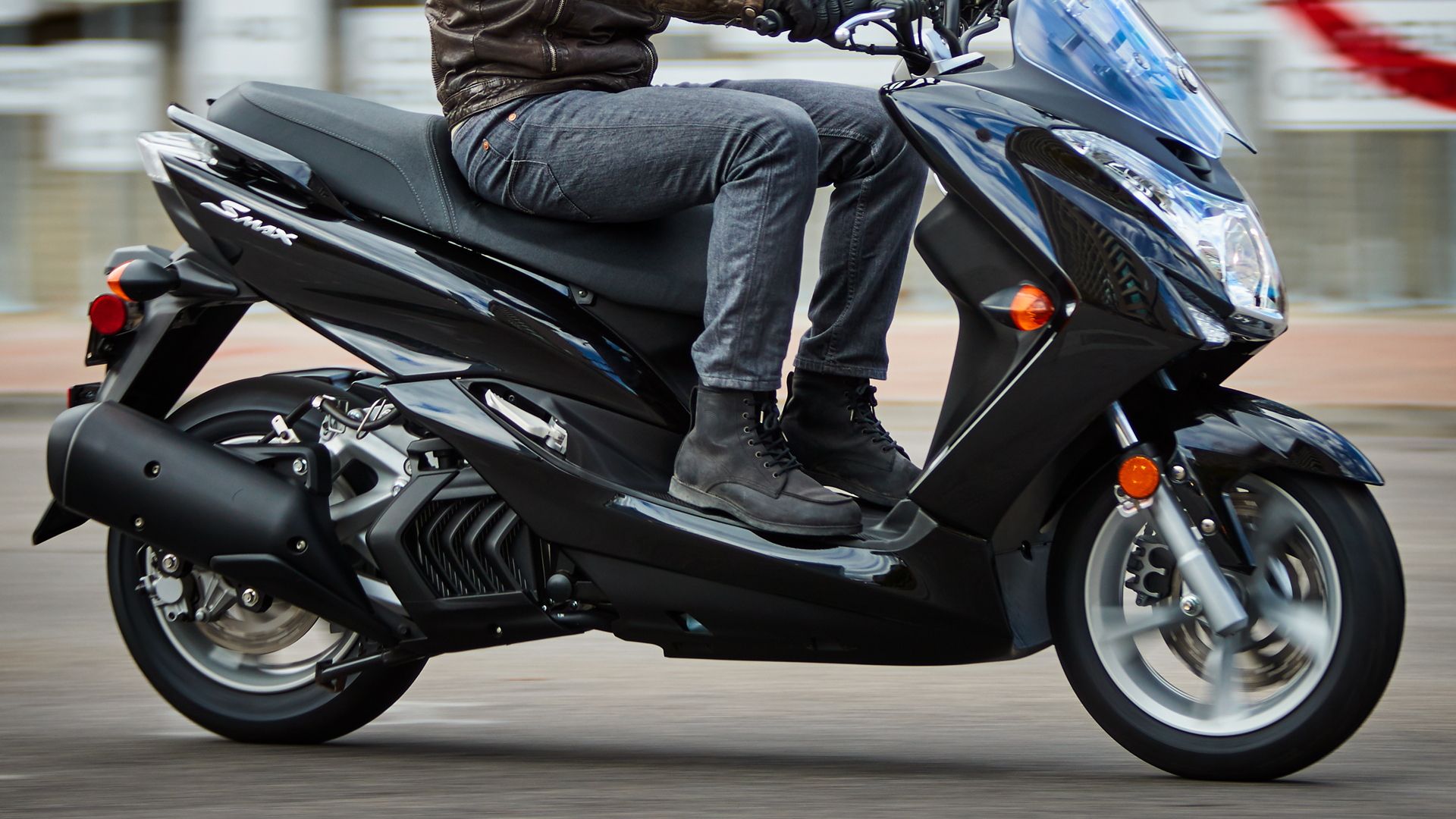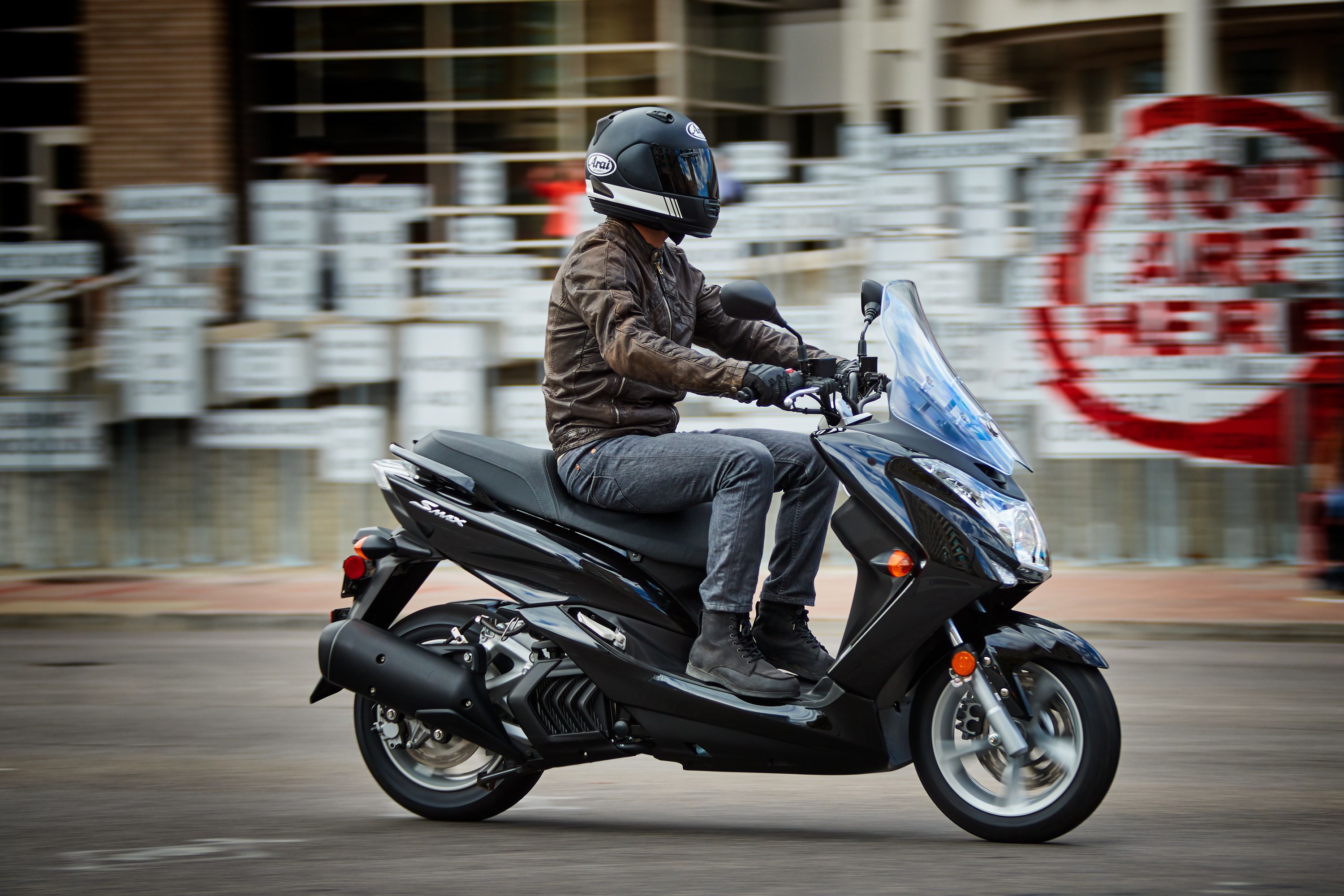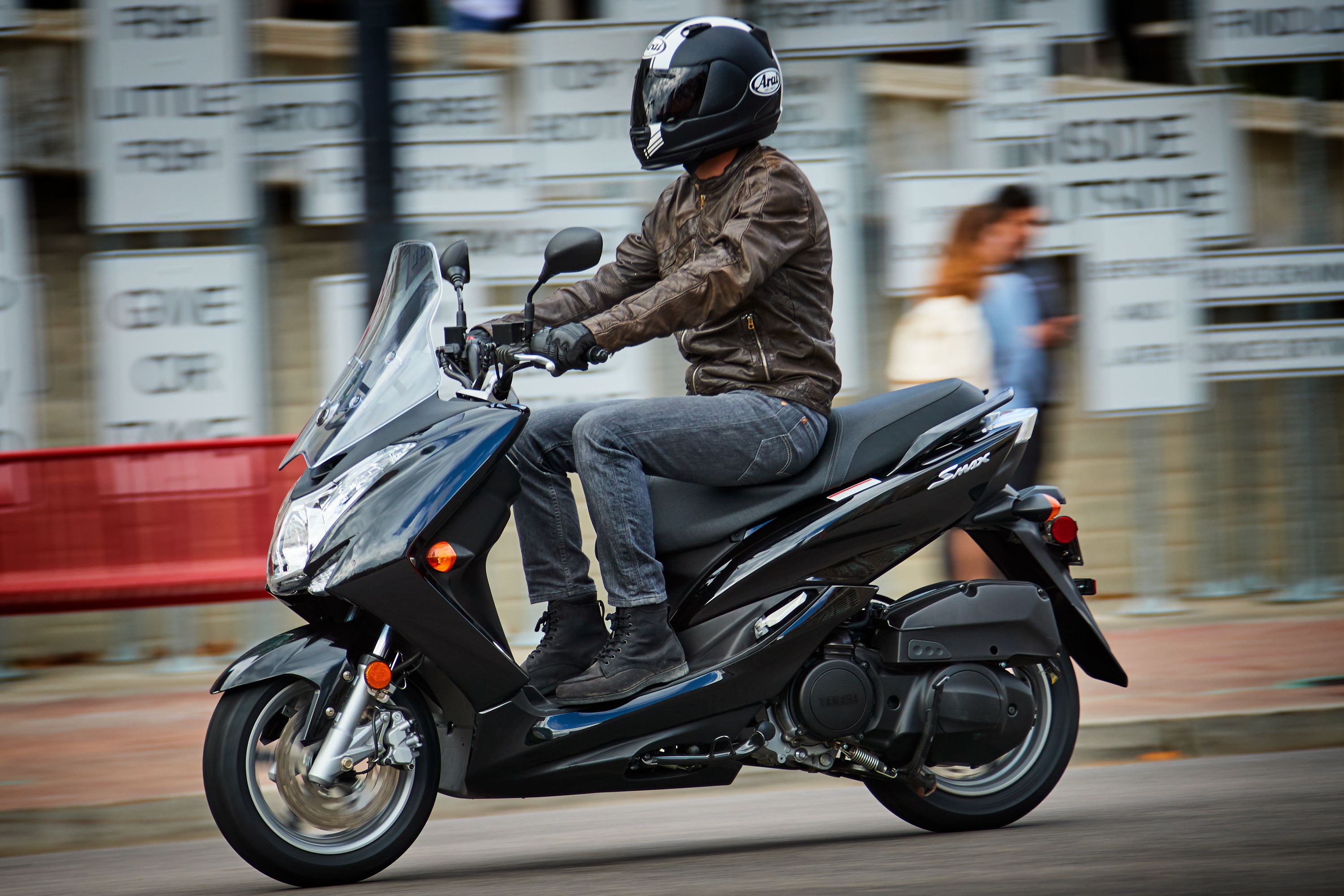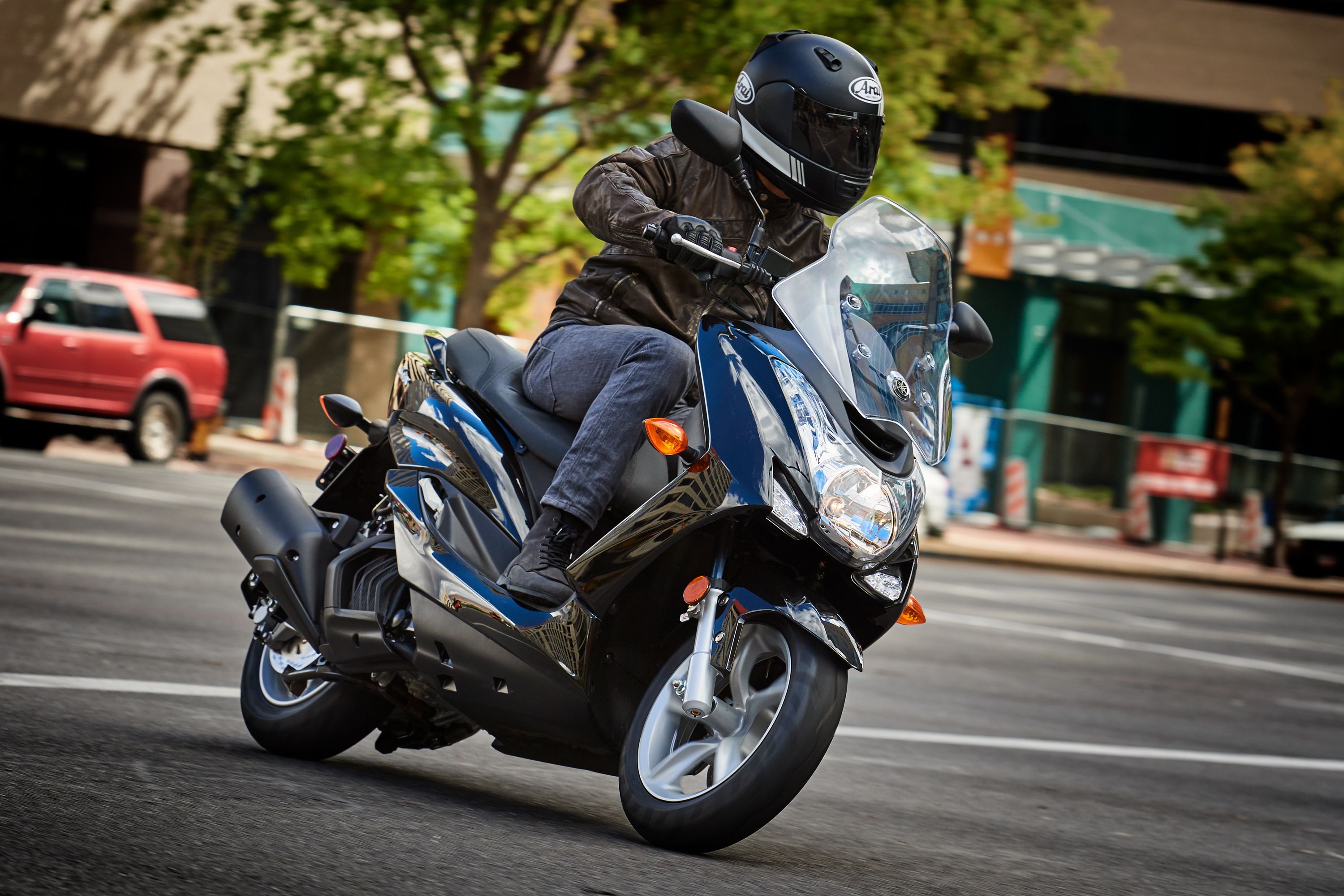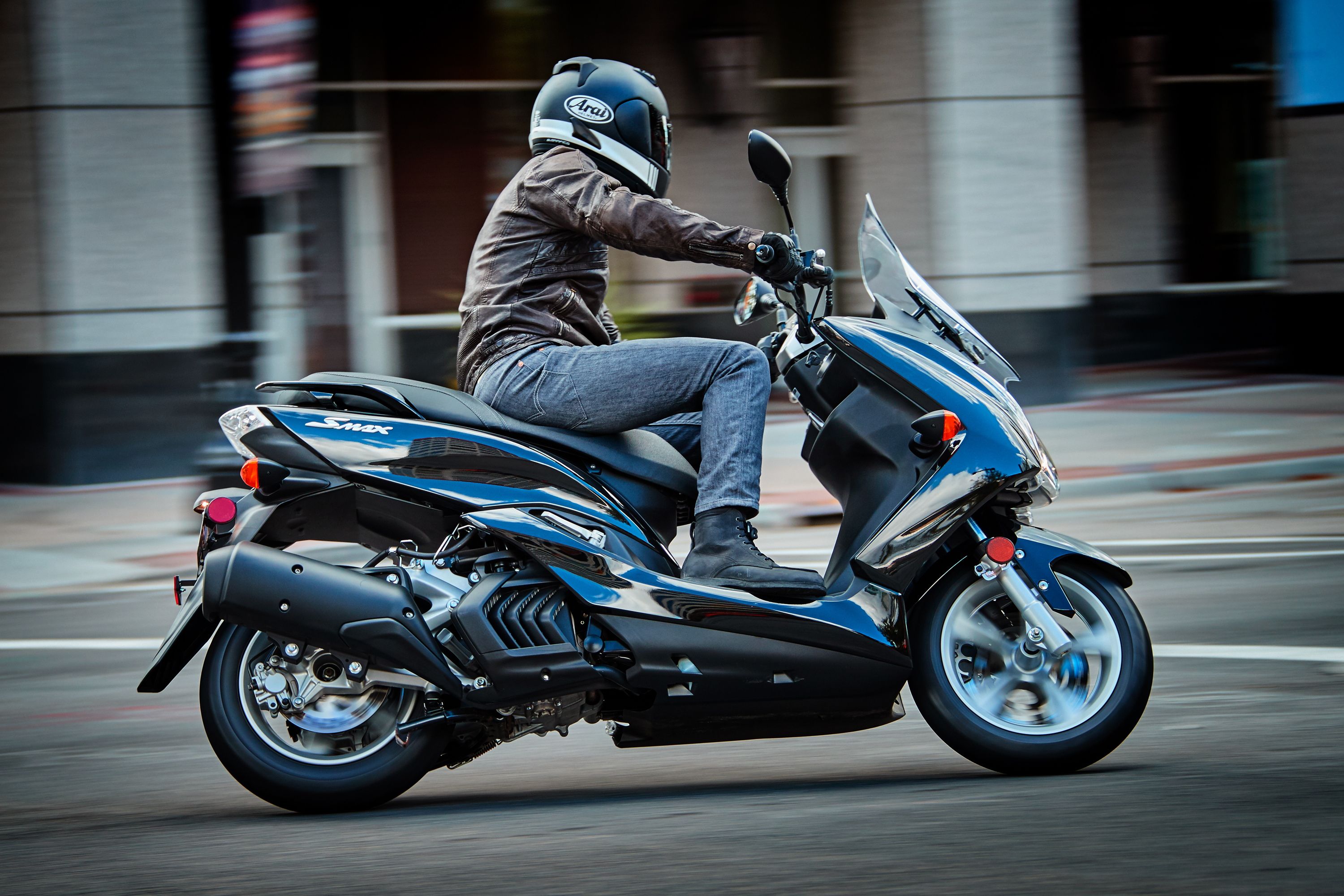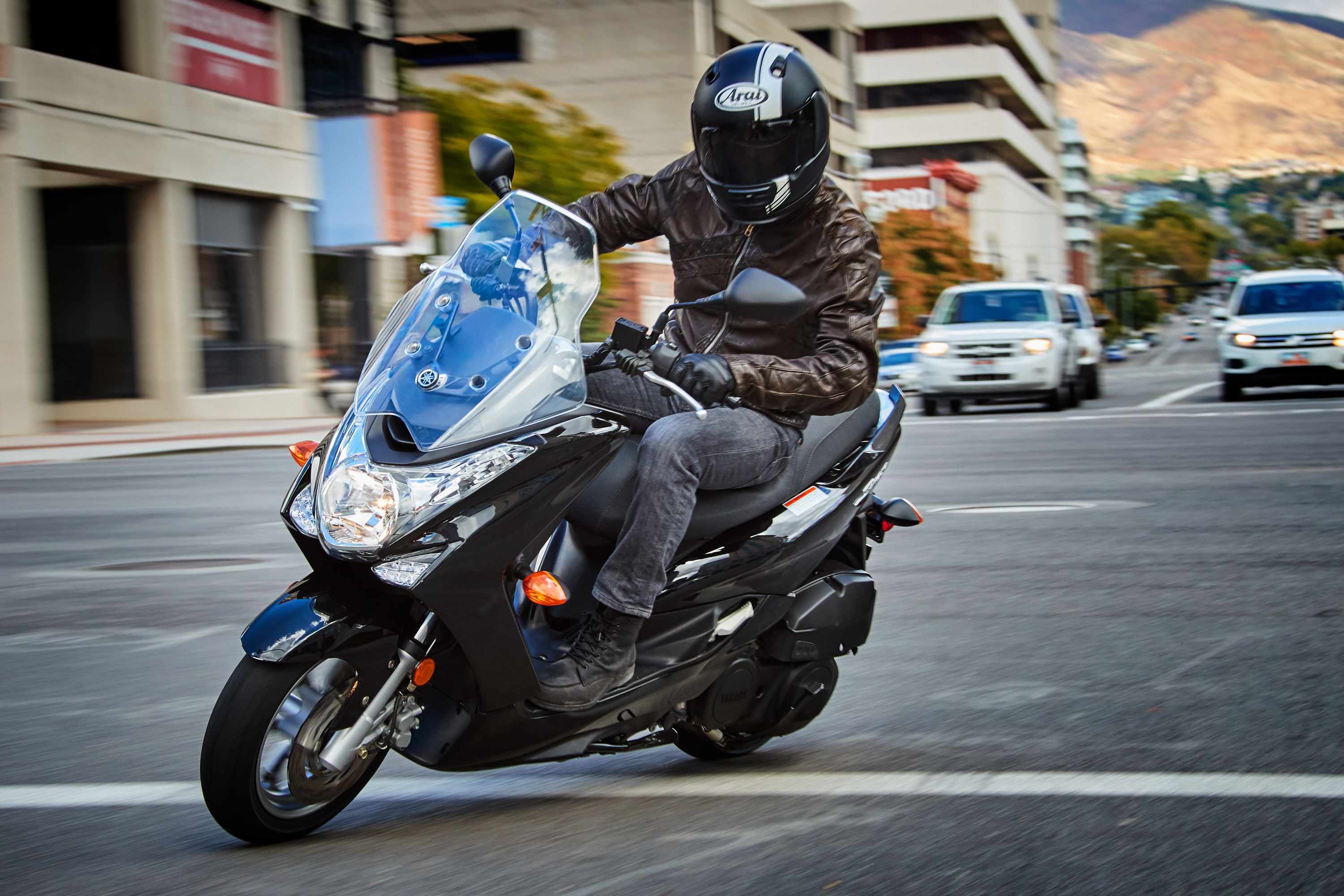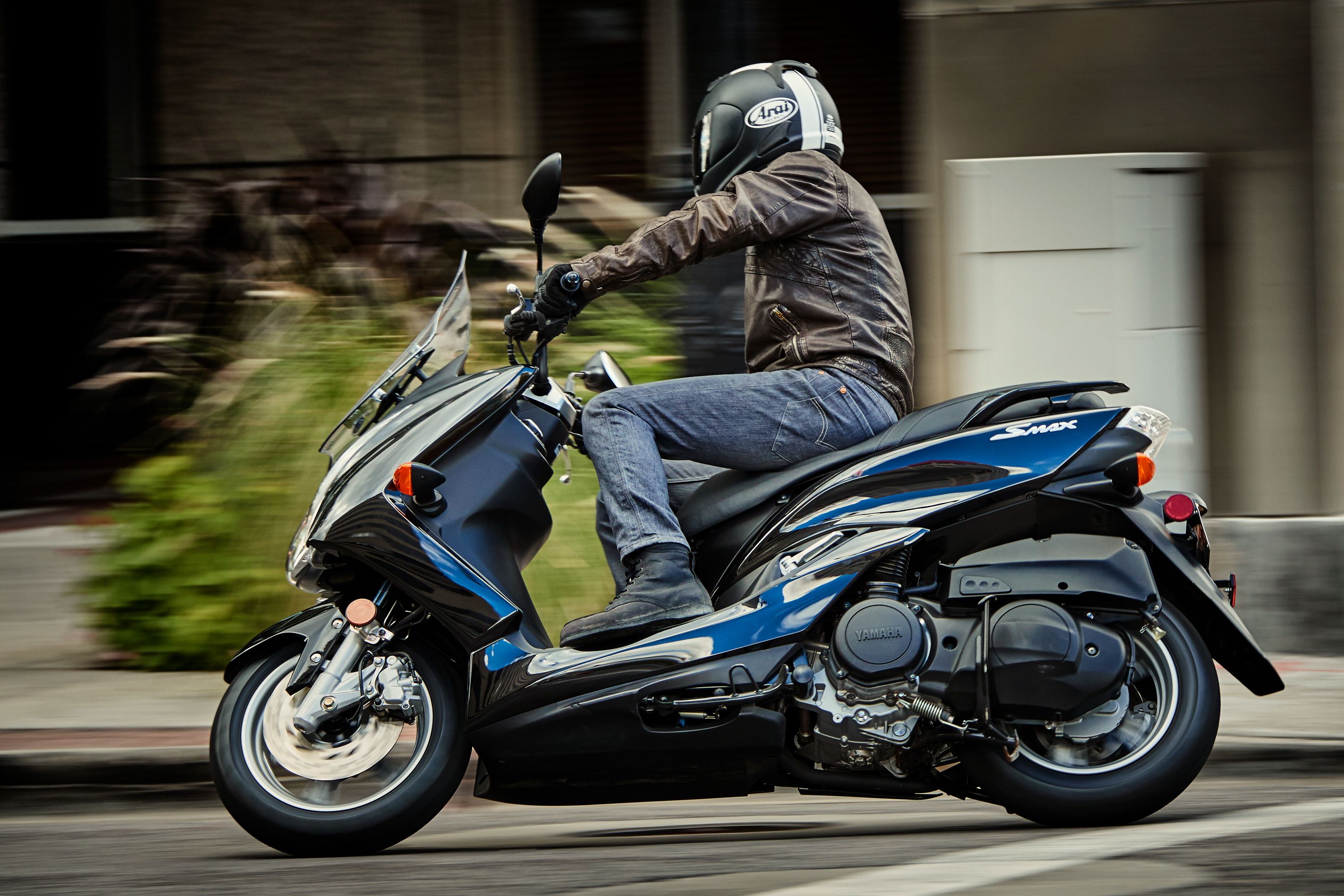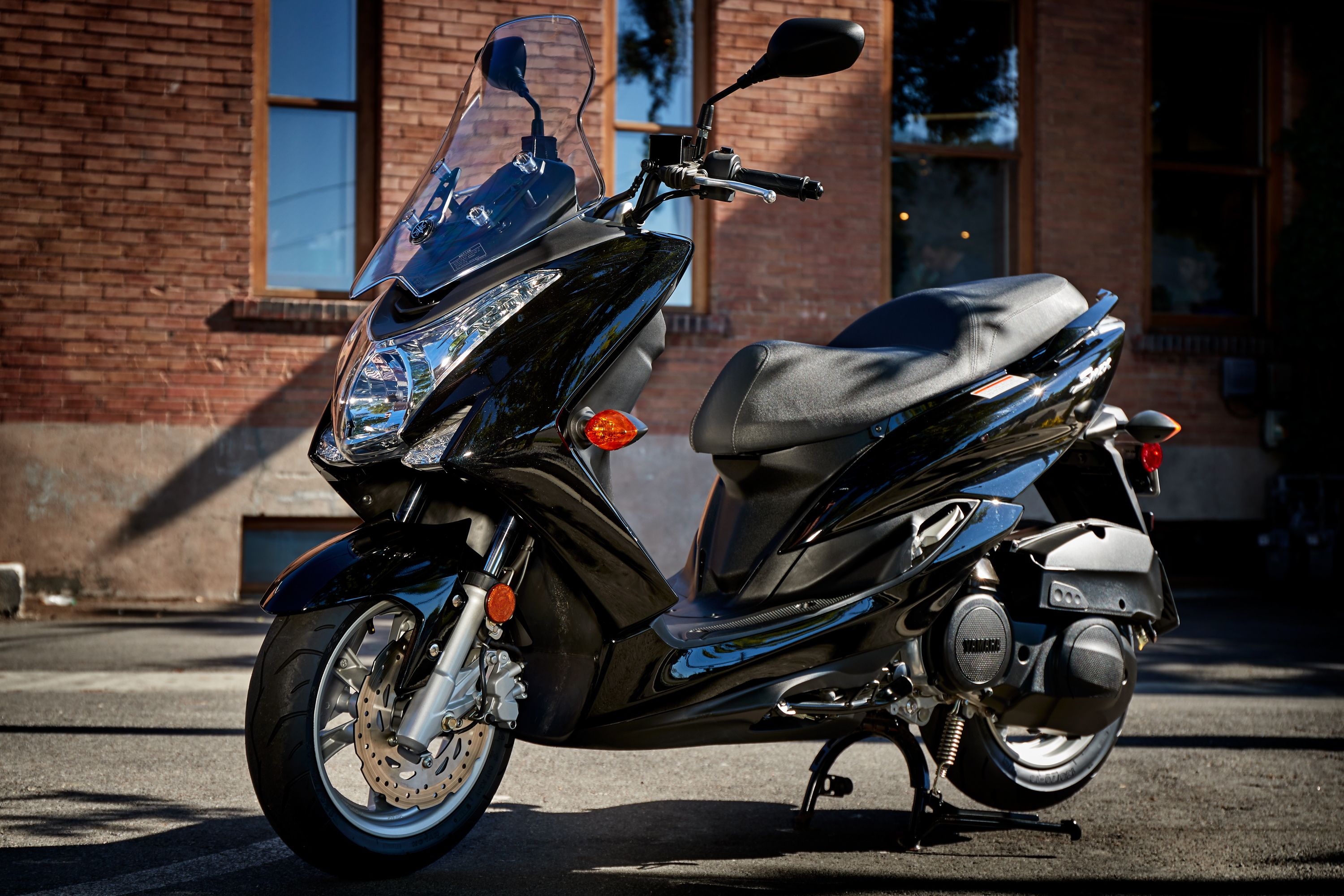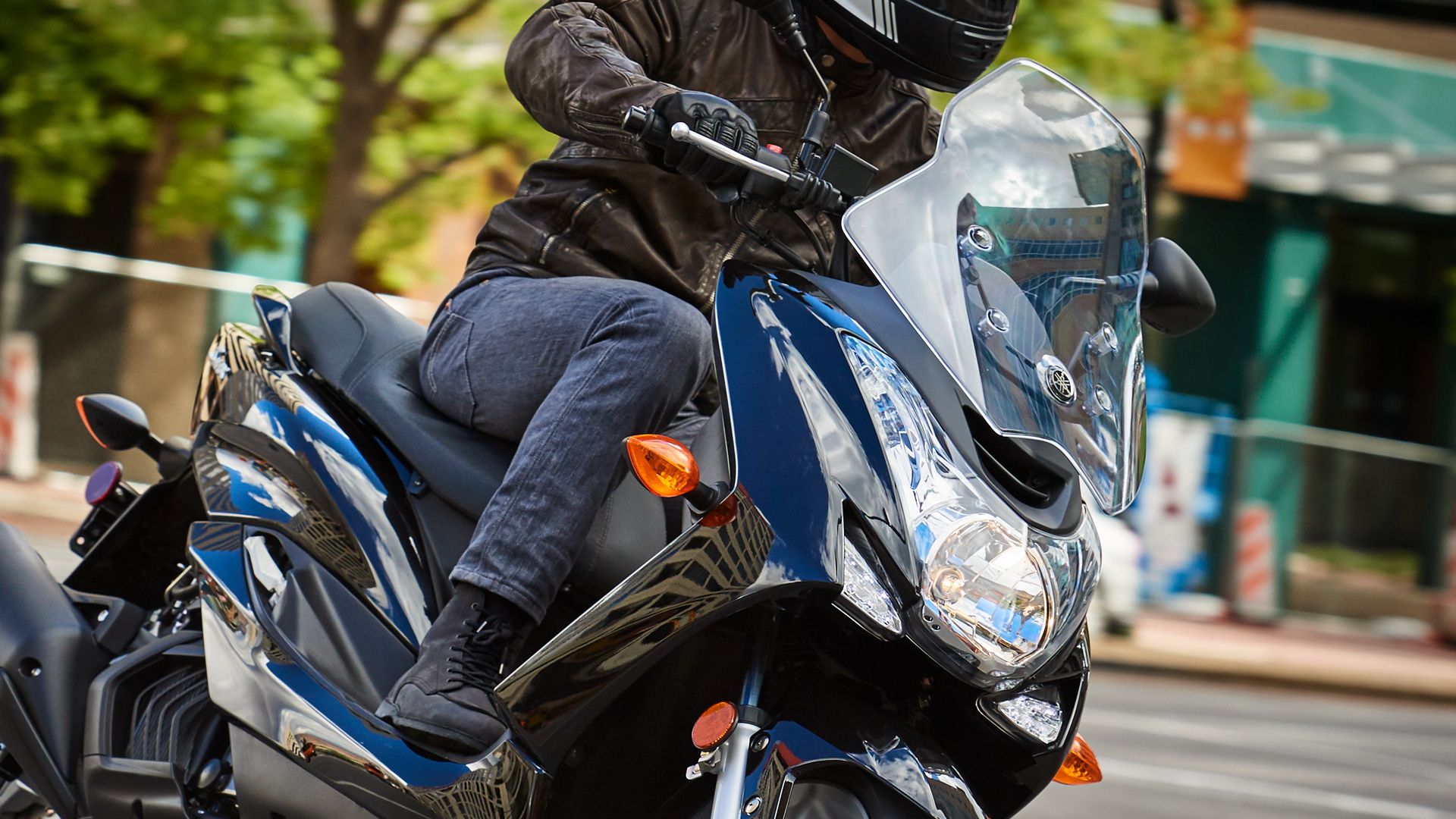Yamaha's new-in-2016 SMAX scooter features a 155 cc engine, which knocks it off the usual tier-license tables, but brings us a minimal-displacement highway commuter option for the U.S. market. The unusual engine size puts the displacement just over the line making it legal to hit the interstate and second now in size to the XMAX in the Yamaha scooter stable for 2020.
2016 - 2020 Yamaha SMAX
- Make: Array
- Model: 2016 - 2020 Yamaha SMAX
- Engine/Motor: single cylinder
- [do not use] Vehicle Model: Array
Yamaha SMAX Design
Introducing the SMAX in 2016, Yamaha gave us the then newest freeway-legal scooter in its stable. Building scooters is a somewhat funny business. You have overseas licensing conventions that force engine sizes into certain size brackets, and the displacement usually eases right up against the upper limits. (Ex: 149 cc in the 150 cc-or-lower bracket.) Things are a bit different in the U.S. market where the main consideration is whether the scooter is freeway/interstate legal or not and that requires that engine displacement be greater than 150 cc.
Scooter design has been well defined for many years now, and the Tuning Fork company toed the category line when setting up the SMAX. A fairly full front fairing shunts the wind aside to protect the rider's legs, and the windshield extends that protection to the rider's chest. The step-through frame makes for easy mounting and dismounting, and serves as something of a light cargo deck to supplement the eight-gallon underseat storage for grocery-getting missions. Alternately, the storage compartment will hold a full-face helmet plus a fistful of possibles.
In 2017, the factory updated passenger comfort over the previous year's model with increased padding in the pillion seat and new LED marker lights on the front fairing improve safety by increasing front-on visibility.
Yamaha SMAX Chassis
At 79.9-inches long and 28.1-inches wide, the SMAX falls within accepted norms for scooter size, but the 31.3-inch seat height coupled with the width can make it difficult for shorter riders to find the ground with both feet. Even though the company claims to provide “plenty of foot space,” taller riders will likely feel a bit bound up behind the fairing, and the offset for the pillion prevents the rider from just scooting back a bit for more legroom.
The telescopic fork front end is set with 26 degrees of rake, leaving us with 3.2 inches of trail for nimble parking lot maneuvers. A coil-over monoshock lays horizontally in the guts of the scoot, leaving more room in the under-seat storage. Wheel travel is unremarkable, with 3.1 inches up front and 3.7 inches in the rear, but let's be honest, you shouldn't be jumping the train tracks on any scooter, so front- and rear-wheel travel is sufficient for its intended purpose.
Cast rims mount wide 13-inch hoops, and hydraulic brake calipers bind the wheels via a 267 mm front, and 245 mm rear brake discs. I've got to say that it's nice to see some larger-diameter brakes making an appearance, and thank goodness Yamaha avoided drum brakes altogether. (Unless you are going for a certain look, there is no excuse for running drum brakes.) No ABS or combined brakes to complicate the system, which is fine with me, though I expect that we will begin to see ABS on everything in the foreseeable future.
|
Suspension, Front/Travel: |
Telescopic fork/ 3.1 inches |
|
Suspension, Rear/Travel: |
Mid-ship, horizontal-positioned rear shock/ 3.7 inches |
|
Brakes / Front: |
Hydraulic disc, 267 mm |
|
Brakes / Rear: |
Hydraulic disc, 245 mm |
|
Tires / Front: |
120/70-13 |
|
Tires / Rear: |
130/70-13 |
Yamaha SMAX Drivetrain
The engine on the SMAX comes nearly square with a 58 mm bore and 58.7 mm stroke that adds up to 155 cc, total. As usual, the engine, tranny, and rear wheel come as a unit, and mate to the bike in the typical swing-mount fashion. The one-banger, water-cooled mill runs with fuel injection and transistor-controlled ignition, and provides a decent 81 mpg, depending on load, riding style and altitude, of course. A constantly-variable transmission (CVT) provides twist-it-and-forget-it operation with no need for a clutch.
Performance is rather important, given that this scoot is meant for commutes that include freeway travel. The SMAX will manage 80 mph at sea level, slightly less at altitude, and up to 85 with a good tailwind, plenty enough to prevent getting run over when you hit the superslab, but definitely stay in the slow lane.
|
Engine: |
155 cc liquid-cooled Four-stroke, SOHC single cylinder; Four valves |
|
Bore x Stroke: |
58.0 mm x 58.7 mm |
|
Compression Ratio: |
11.0:1 |
|
Fuel Delivery: |
Fuel Injection |
|
Ignition: |
Digital TCI: Transistor Controlled Ignition |
|
Transmission: |
Automatic CVT |
|
Final Drive: |
V-Belt |
Yamaha SMAX Price
Base MSRP is $3,799, up just a bill from last year. For 2020, the SMAX repeats last year's colorway of Candy Red and Yamaha gives you a 12-year limited factory warranty on your new scooter.
|
Warranty: |
One-Year Limited Factory Warranty |
|
Colors: |
|
|
└ 2016: |
Gun Metal Gray, Candy Red |
|
└ 2017, 2018: |
Raven |
|
└ 2019, 2020: |
Candy Red |
|
Price: |
|
|
└ 2016: |
$3,690 |
|
└ 2017-2019: |
$3,699 |
|
└ 2020: |
$3,799 |
Yamaha SMAX Competitor
The PCX150 from Honda seems a likely candidate for a head-to-head comparison with the SMAX given the overall design with full front fairings and wind deflector.
Honda PCX150
Right off the bat, I have to admit that the two scoots fill slightly different market niches, but only slightly. The main detail here is engine displacement; Honda rolls out with a 150 cc motor to fit licensing laws, while the 155 cc Yamaha puts it just over that line. Both mills run liquid cooling and fuel injection, so in the U.S., both are suitable for highway use and so there is little to choose between the two, engine-wise.
At 3.9 inches of travel, the Honda has a more plush front suspension, but it gives up 0.7 inch to the Yamaha with a flat 3 inches in back. Again, no jumping the tracks on one of these, and at the end of the day, the suspension travel numbers more or less average out.
A big difference between the two occurs in the chassis layout. While the SMAX has a rather traditional step-through, the PCX150 is rather crowded right there, actually it's not really a step-through since you have to hike your leg quite a bit to mount it. Admittedly, this gives the Honda more of a big-bike panache, but if that's what you are into, perhaps you shouldn't be looking for a scooter. The more traditional step-through on the SMAX gives you the ability to use it as a between-your-feet cargo deck.
Honda claims 100 mpg, depending on riding style and such, 19 mpg more than the Yamaha, but really anything over 70 mpg is good enough to be considered economical transportation. Honda comes in a little less expensive at $3,699, beating Yamaha by a bill. No matter how budget-conscious a buyer is, that $100 will likely not be a deal breaker. If anything, the lack of usable legroom on the SMAX will be more of a concern. Bottom line is; check the fit before making any serious commitments.
See our full review of the Honda PCX150.
He Said
“On paper, 80 to 85 mph looks doable, but to be perfectly honest I would be extremely hesitant to get on the interstate with only a 155 cc mill under me. That aside, this scoot will be appropriate for many areas in the U.S. and it deserves a look if you want a small-displacement ride.”
She Said
My wife and fellow writer, Allyn Hinton, says, "I think if I were going on the freeway, I'd be more comfortable on the TMAX instead of the SMAX. That 530 cc engine wouldn't be at its absolute limit at highway speeds. I feel safer at cruising speed knowing the machine still has more to give me in case I need it. However, around town or popping back and forth to the campus, the SMAX is not a bad ride."
Yamaha SMAX Specifications
|
Engine & Displacement: |
|
|
Engine: |
155 cc liquid-cooled Four-stroke, SOHC single cylinder; Four valves |
|
Bore x Stroke: |
58.0 mm x 58.7 mm |
|
Compression Ratio: |
11.0:1 |
|
Fuel Delivery: |
Fuel Injection |
|
Ignition: |
Digital TCI: Transistor Controlled Ignition |
|
Transmission: |
Automatic CVT |
|
Final Drive: |
V-Belt |
|
Chassis: |
|
|
Suspension, Front/Travel: |
Telescopic fork/ 3.1 inches |
|
Suspension, Rear/Travel: |
Mid-ship, horizontal-positioned rear shock/ 3.7 inches |
|
Brakes / Front: |
Hydraulic disc, 267 mm |
|
Brakes / Rear: |
Hydraulic disc, 245 mm |
|
Tires / Front: |
120/70-13 |
|
Tires / Rear: |
130/70-13 |
|
Dimensions & Capacities: |
|
|
L x W x H: |
79.9 inches x 28.1 inches x 51.0 inches |
|
Seat Height: |
31.3 inches |
|
Wheelbase: |
55.3 inches |
|
Rake (Caster Angle) : |
26.0° |
|
Trail: |
3.2 inches |
|
Ground Clearance: |
n/a |
|
Fuel Capacity: |
2.0 gallons |
|
Fuel Economy: |
81 mpg |
|
Wet Weight: |
328 pounds |
|
Details: |
|
|
Warranty: |
One-Year Limited Factory Warranty |
|
Colors: |
|
|
└ 2016: |
Gun Metal Gray, Candy Red |
|
└ 2017, 2018: |
Raven |
|
└ 2019, 2020: |
Candy Red |
|
Price: |
|
|
└ 2016: |
$3,690 |
|
└ 2017-2019: |
$3,699 |
|
└ 2020: |
$3,799 |
Further Reading
Yamaha
Read more Yamaha news.


